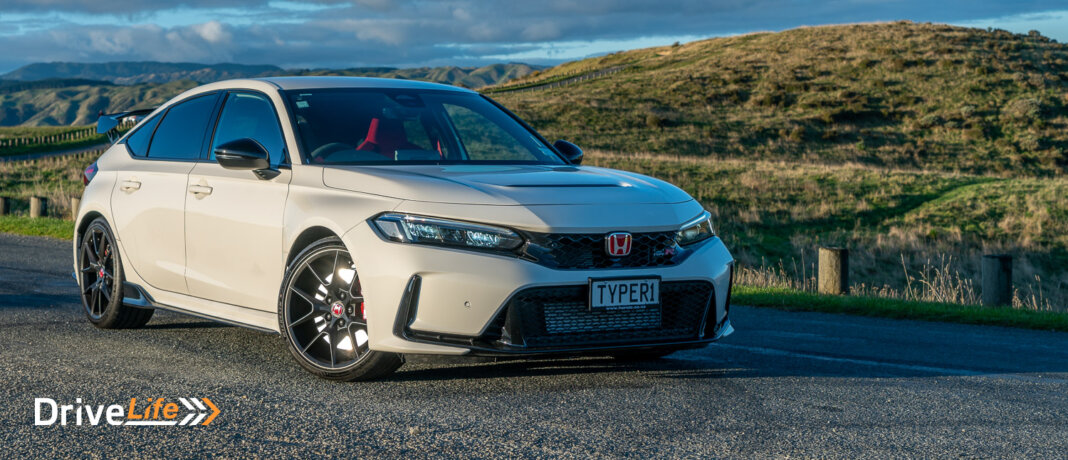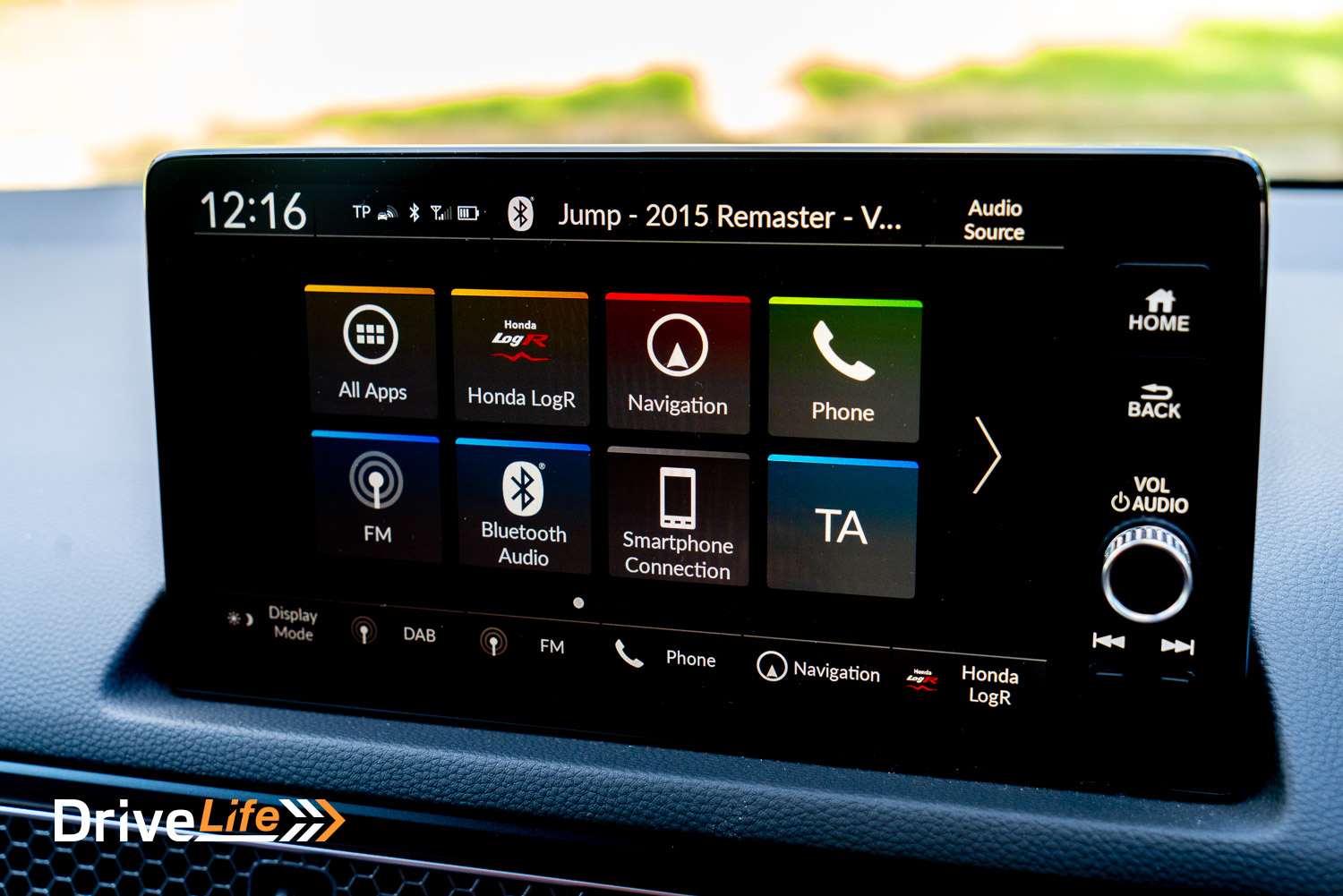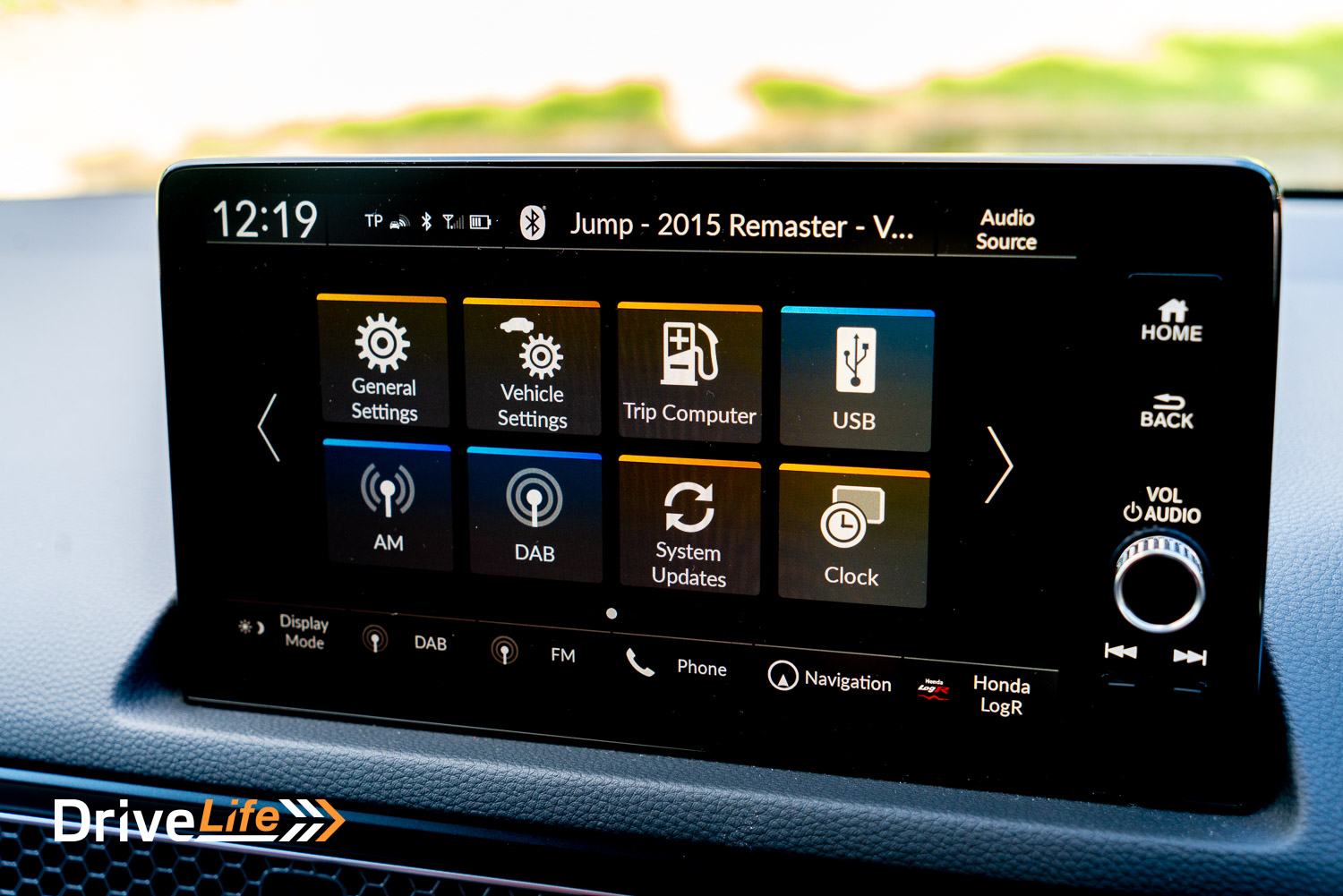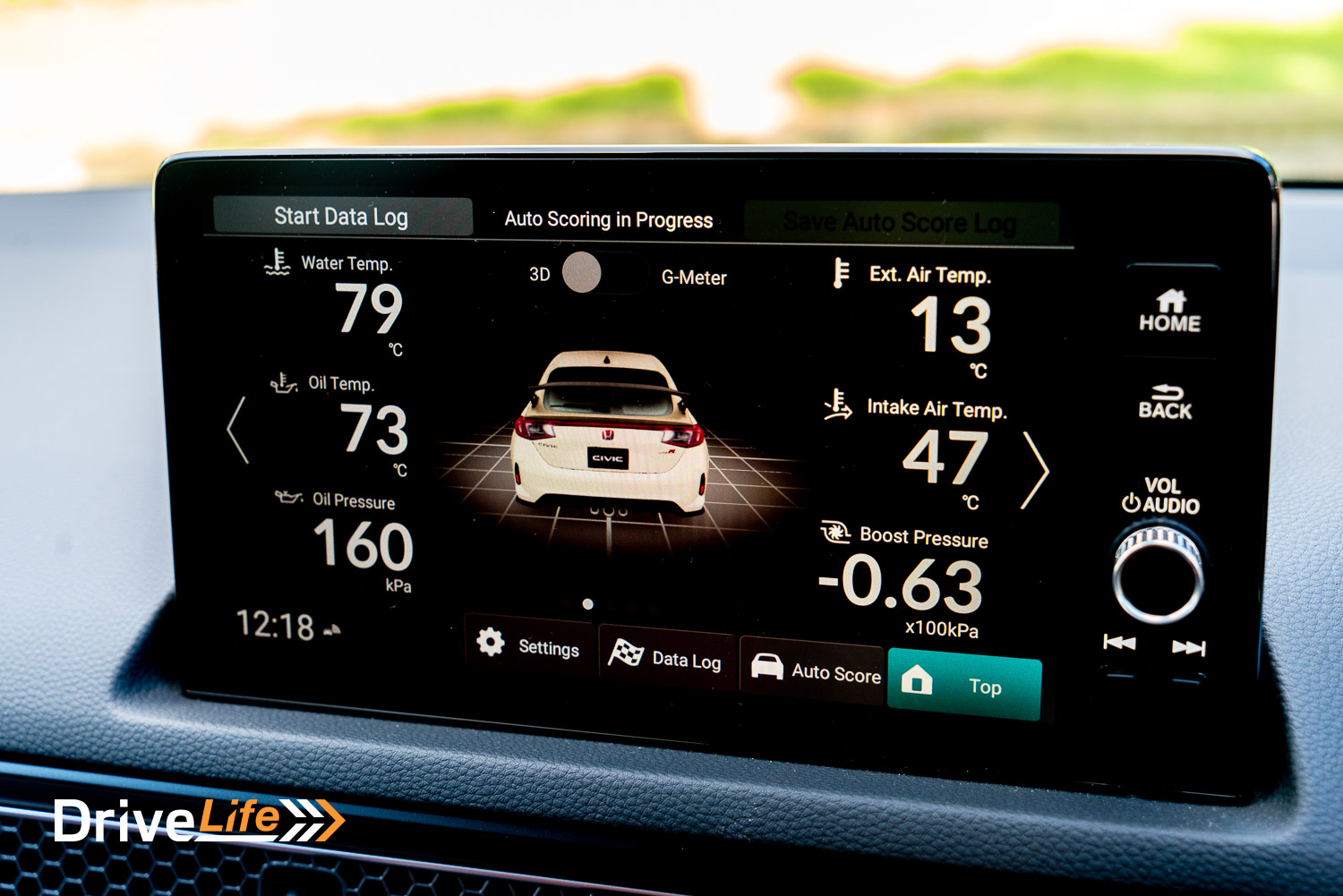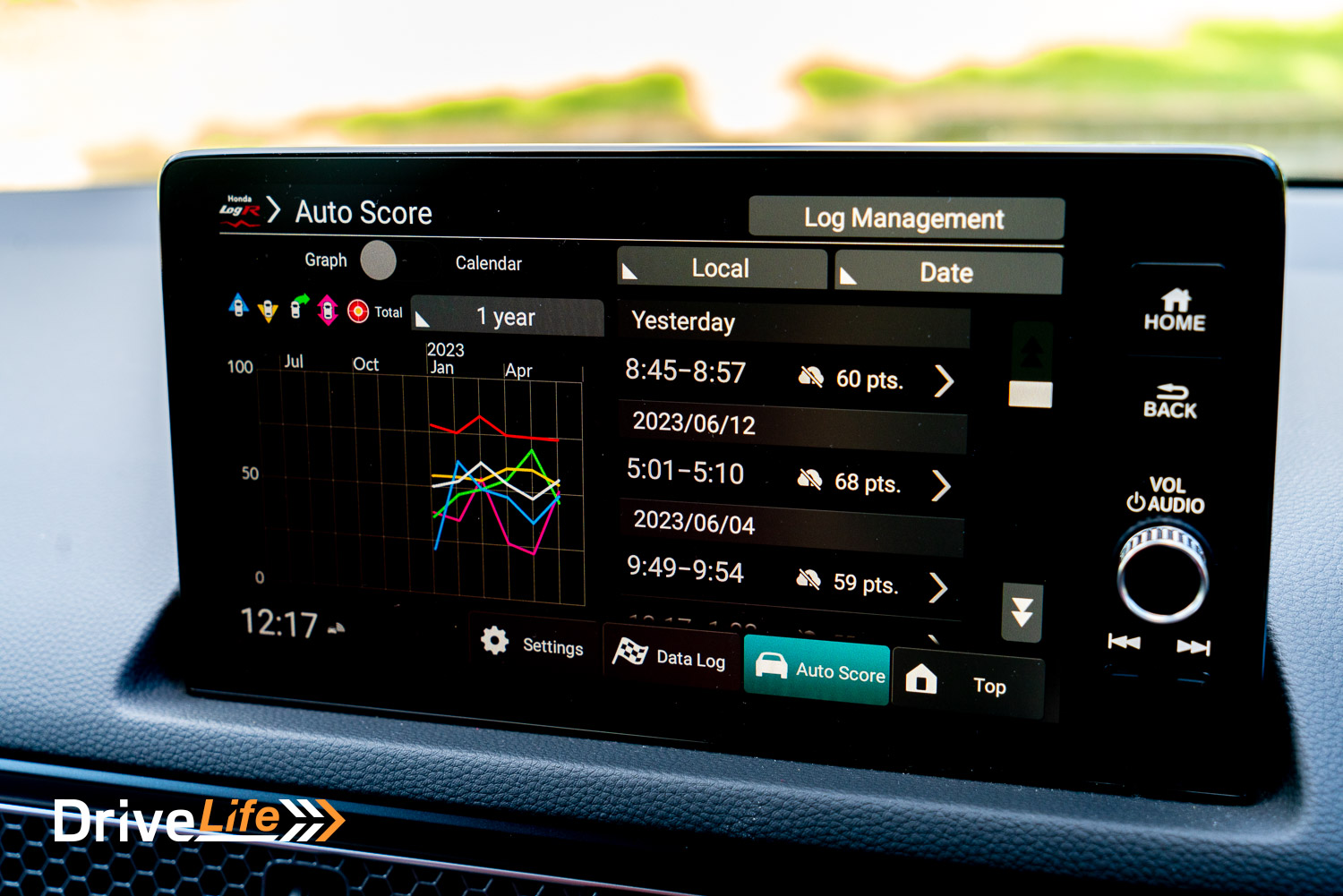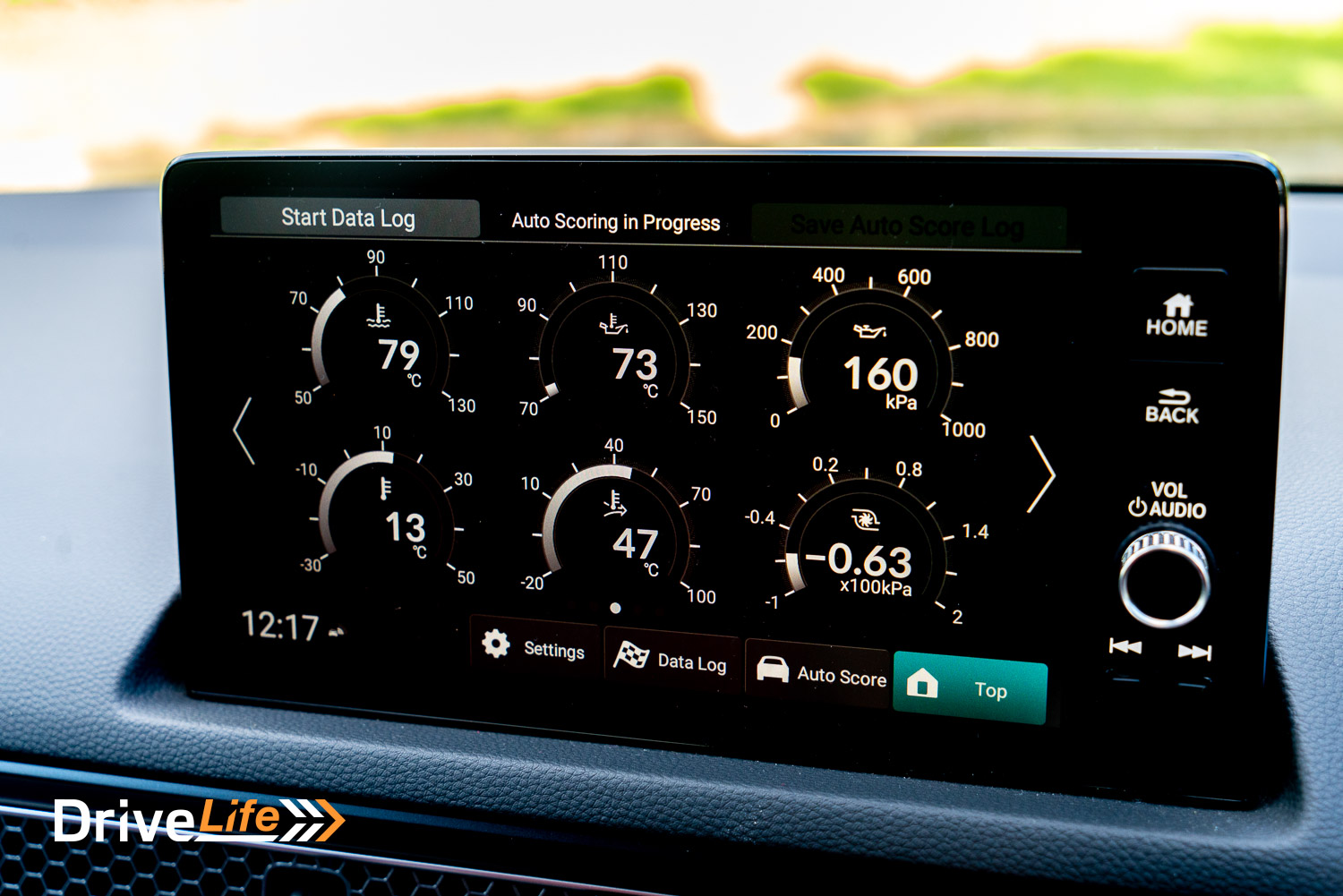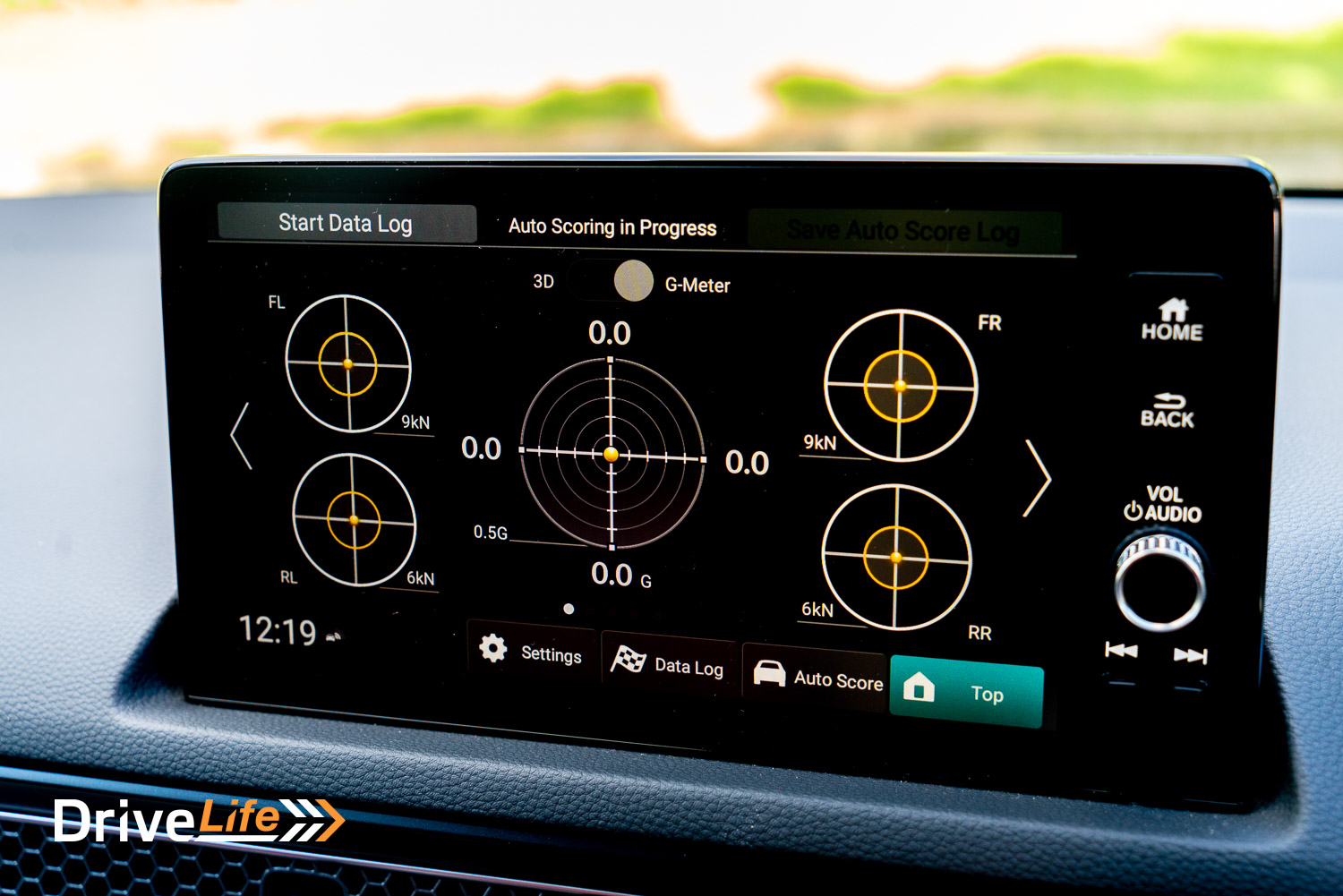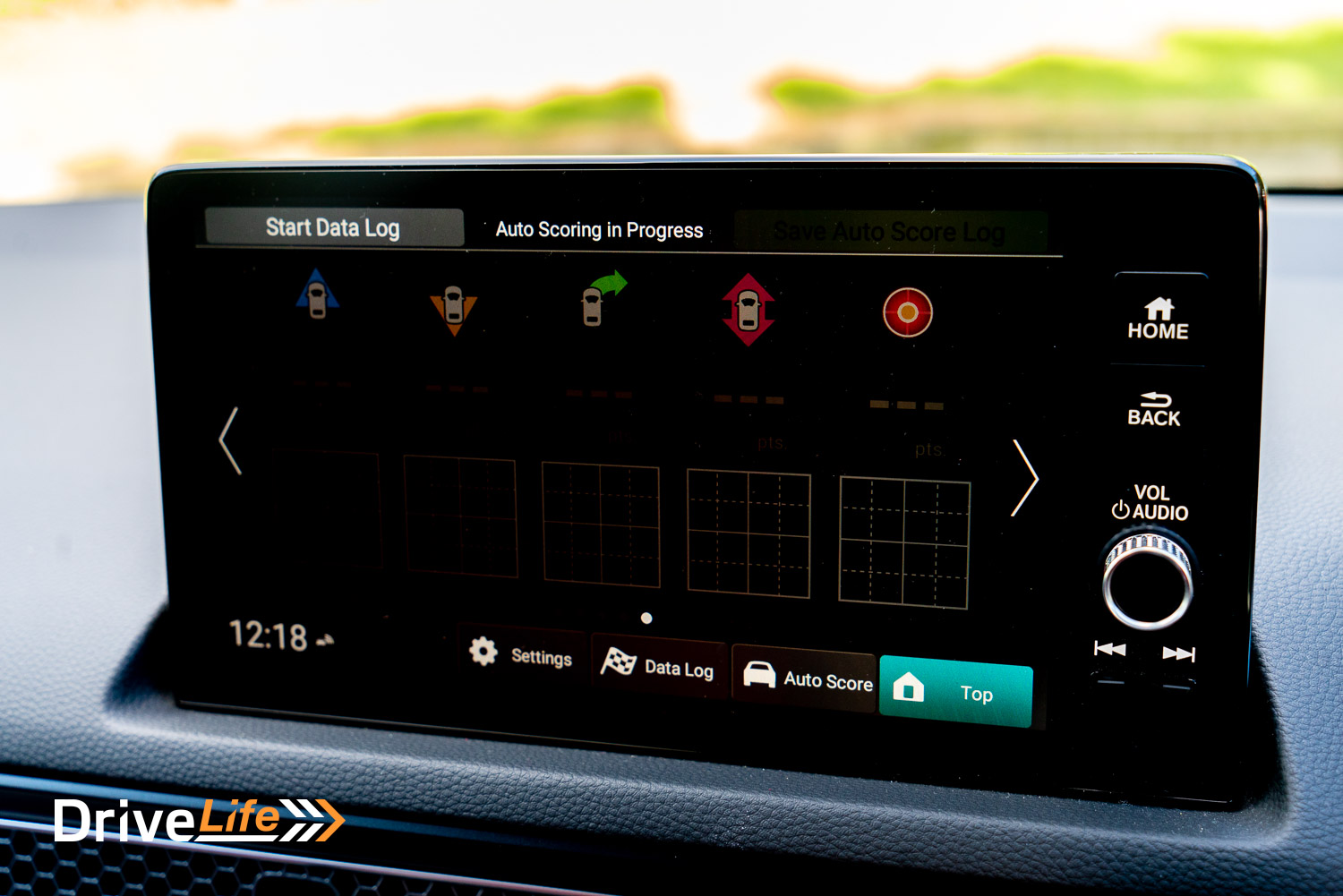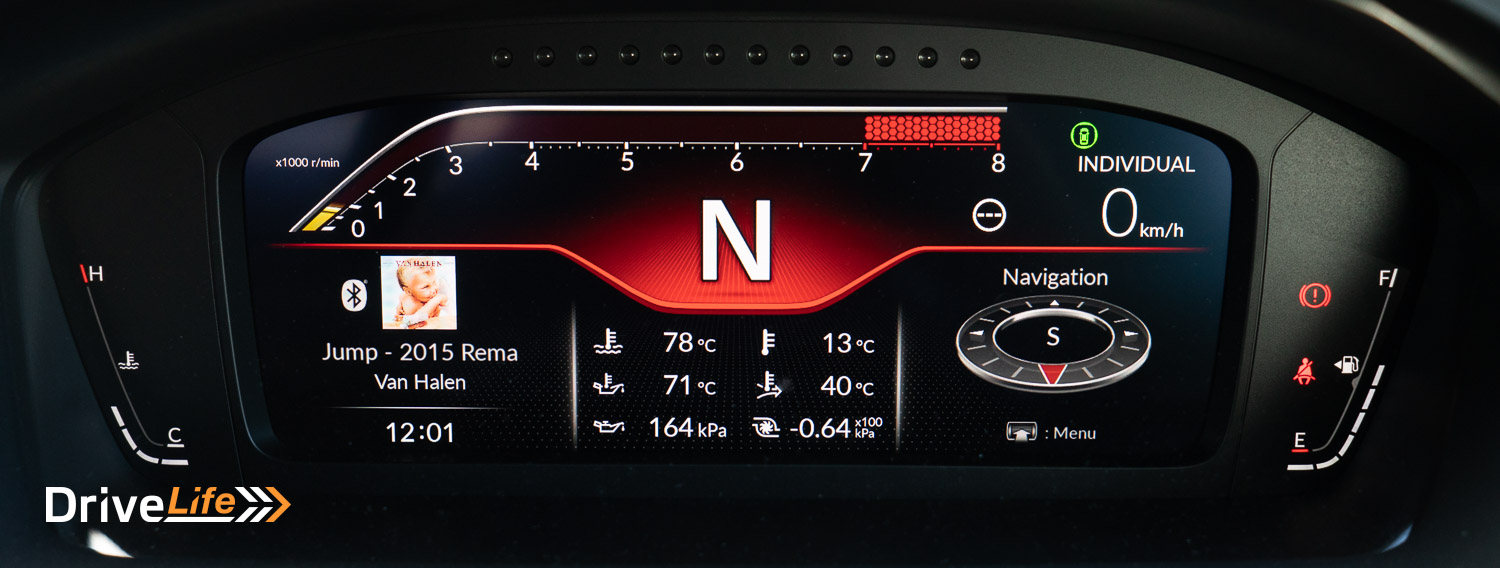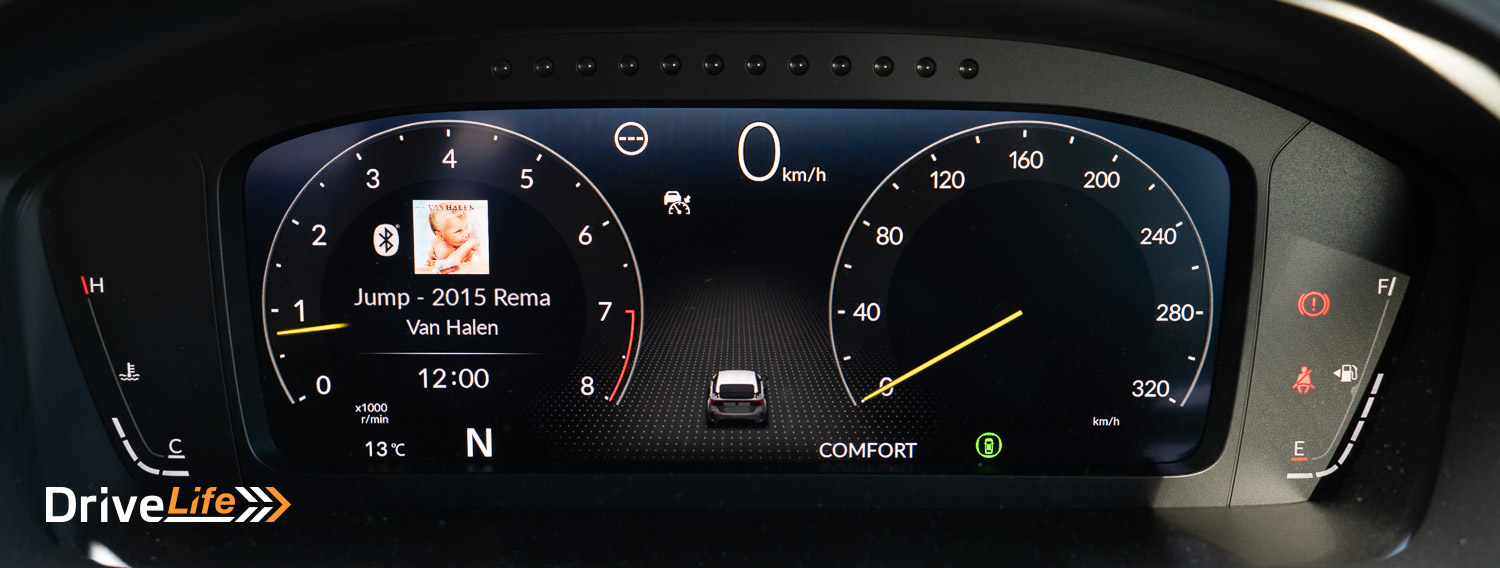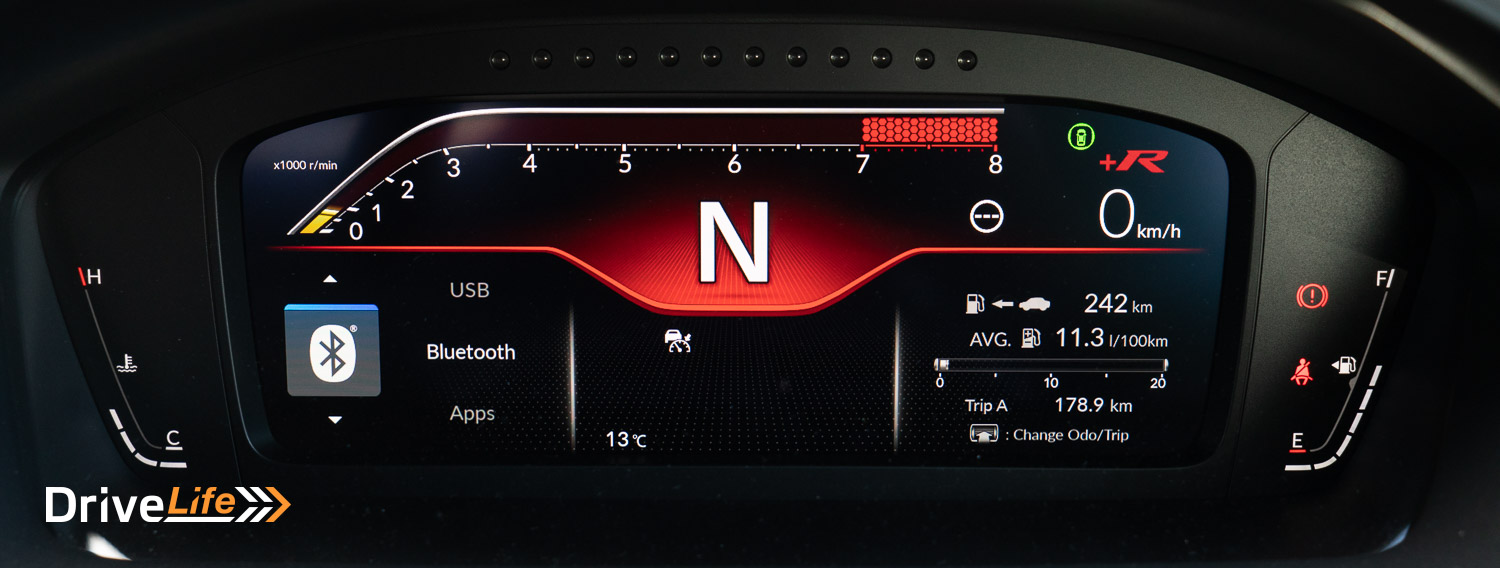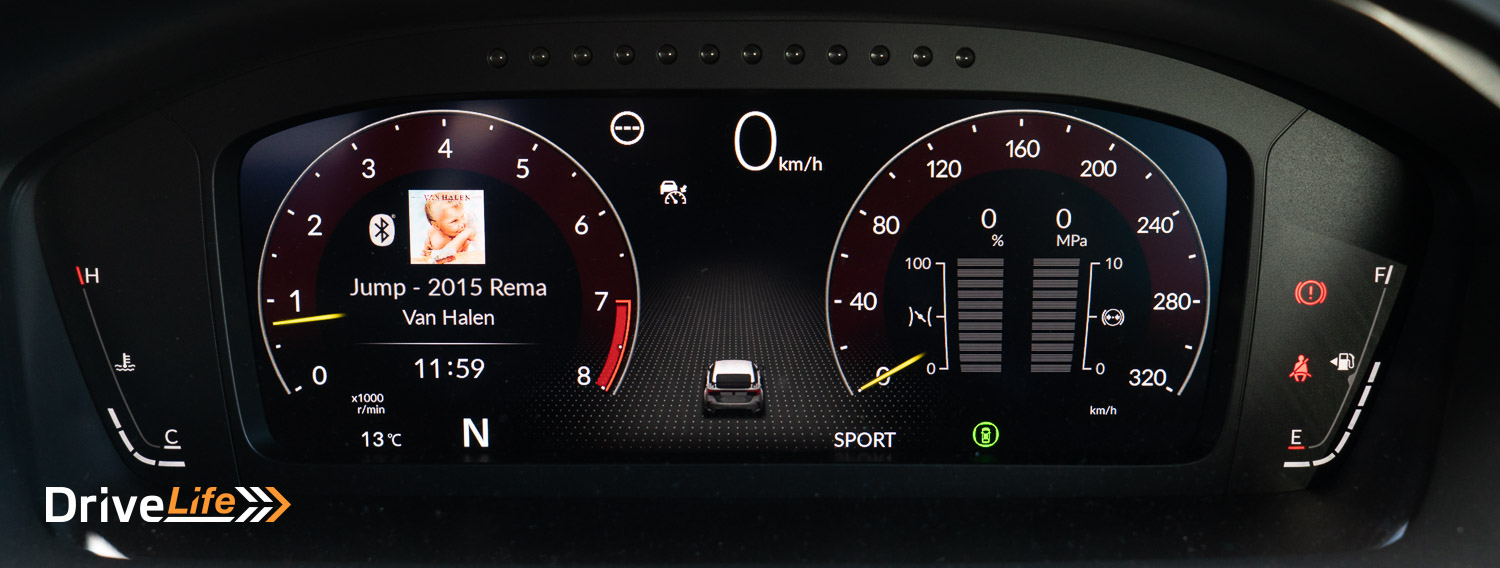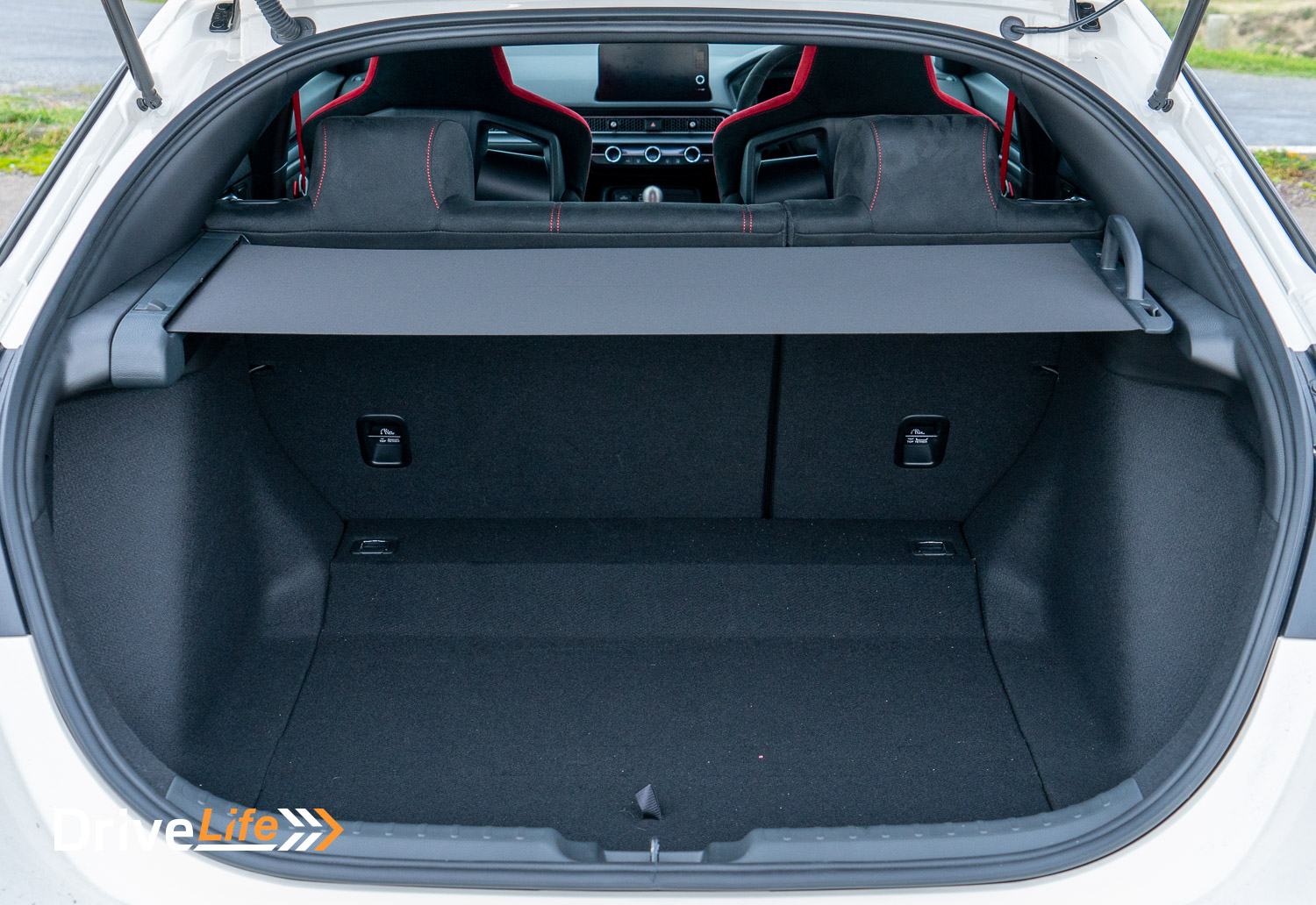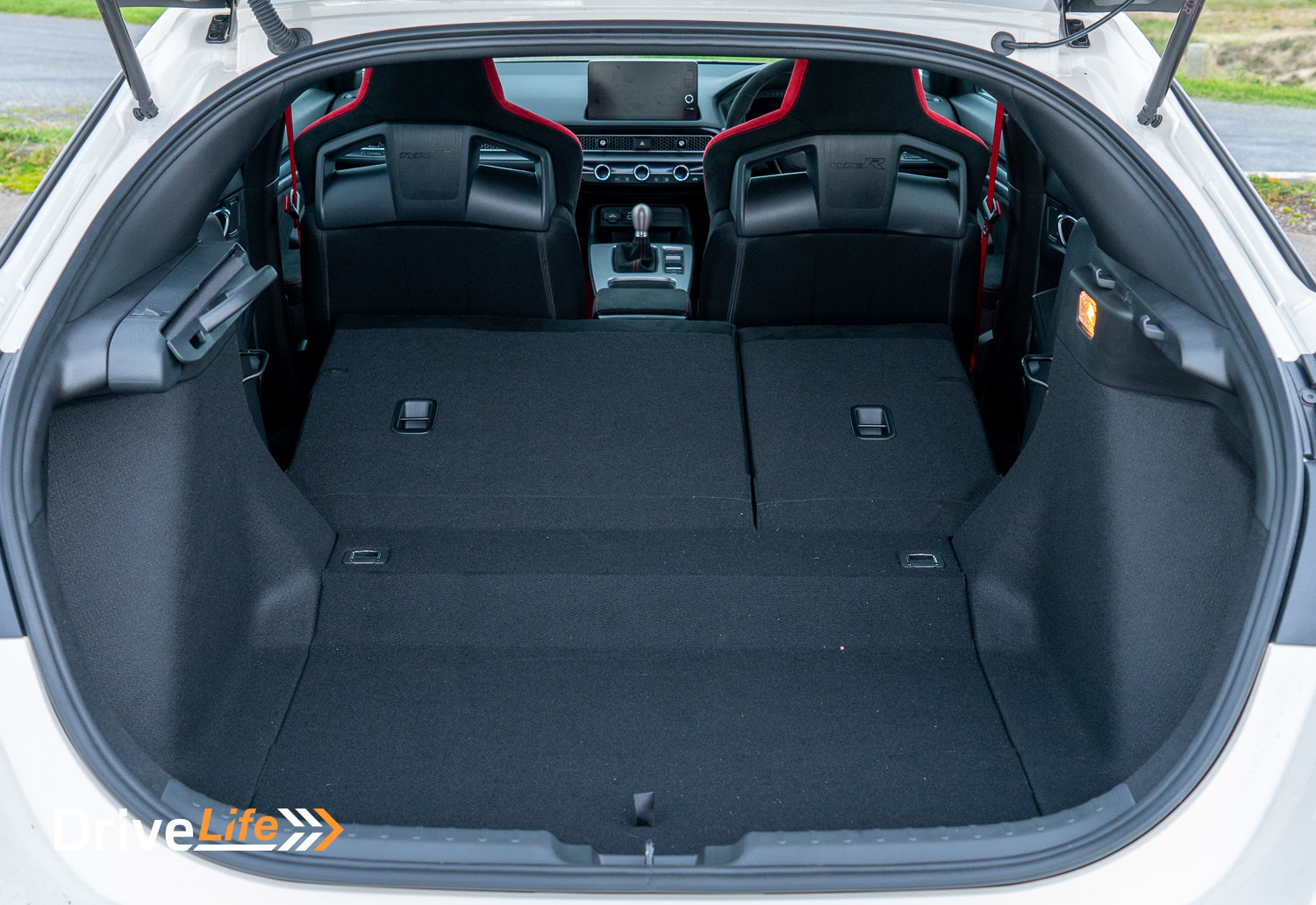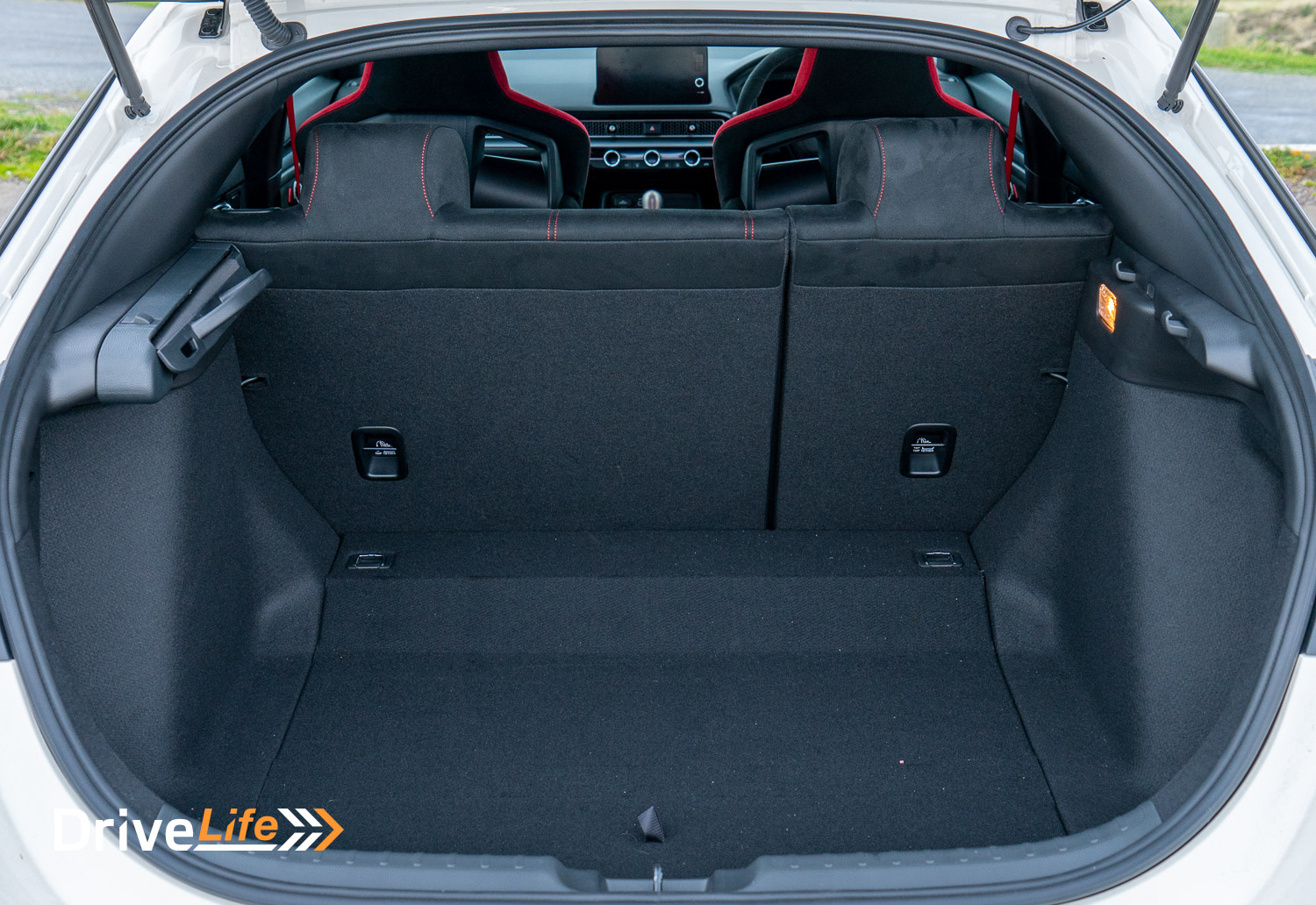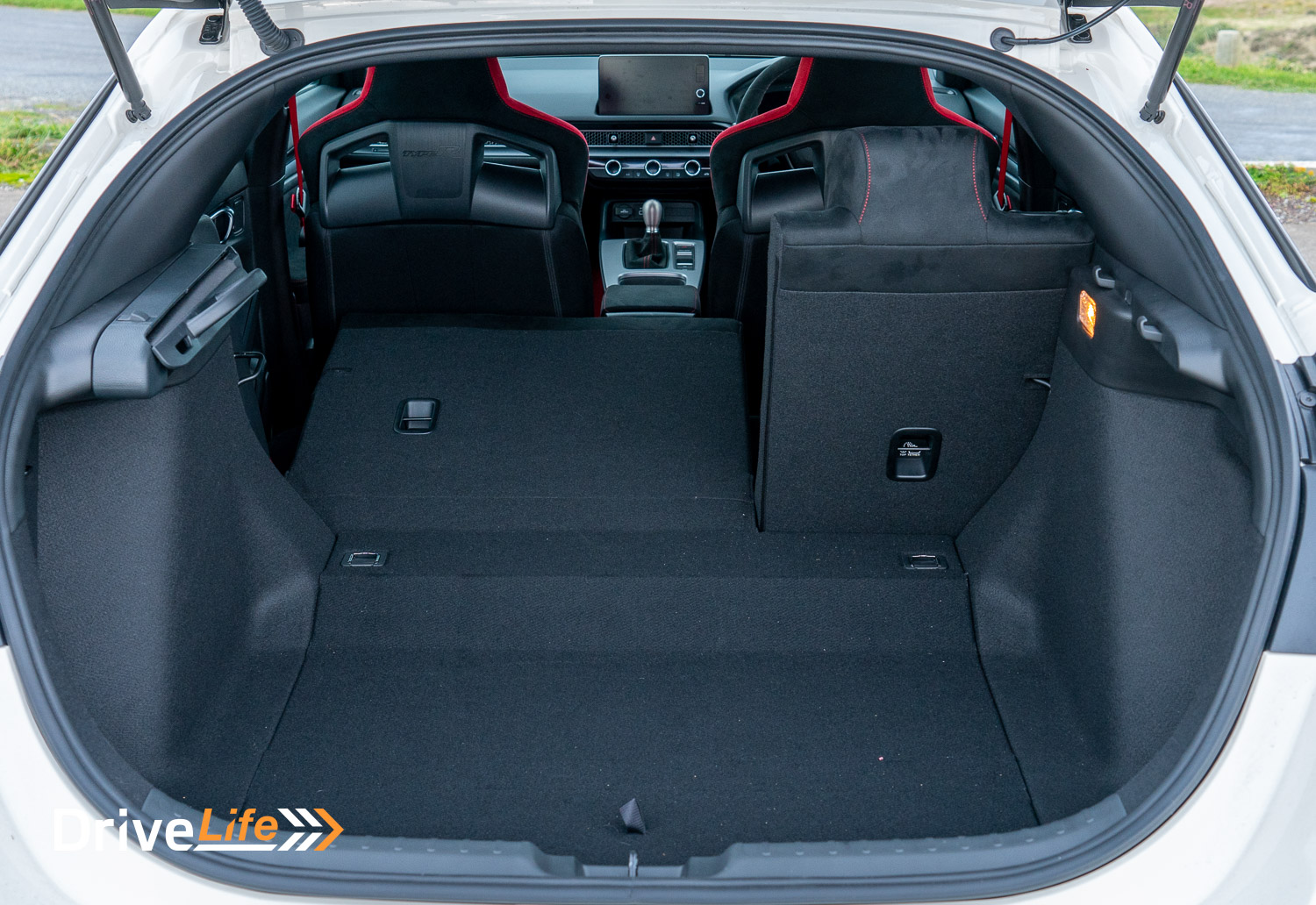The Honda Civic Type R is one of the most reputable hot hatches in the automotive world. Through the years, it has helped define the hot hatch genre and it has demonstrated what Honda could do with an FF, or front-wheel drive, performance platform.
In 2022, the Honda Civic Type R launched the seventh generation Civic Type R, coinciding with its 25th anniversary. Honda celebrated by giving us the opportunity to take the new Honda Civic Type R for a fang at the now shuttered Pukekohe Raceway.
Ever since then, I have been itching to get one out for a full test, and recently, Honda gave us that opportunity. So, could this new Civic Type R be the best yet? Could it be the best hot hatch we’ve tested?
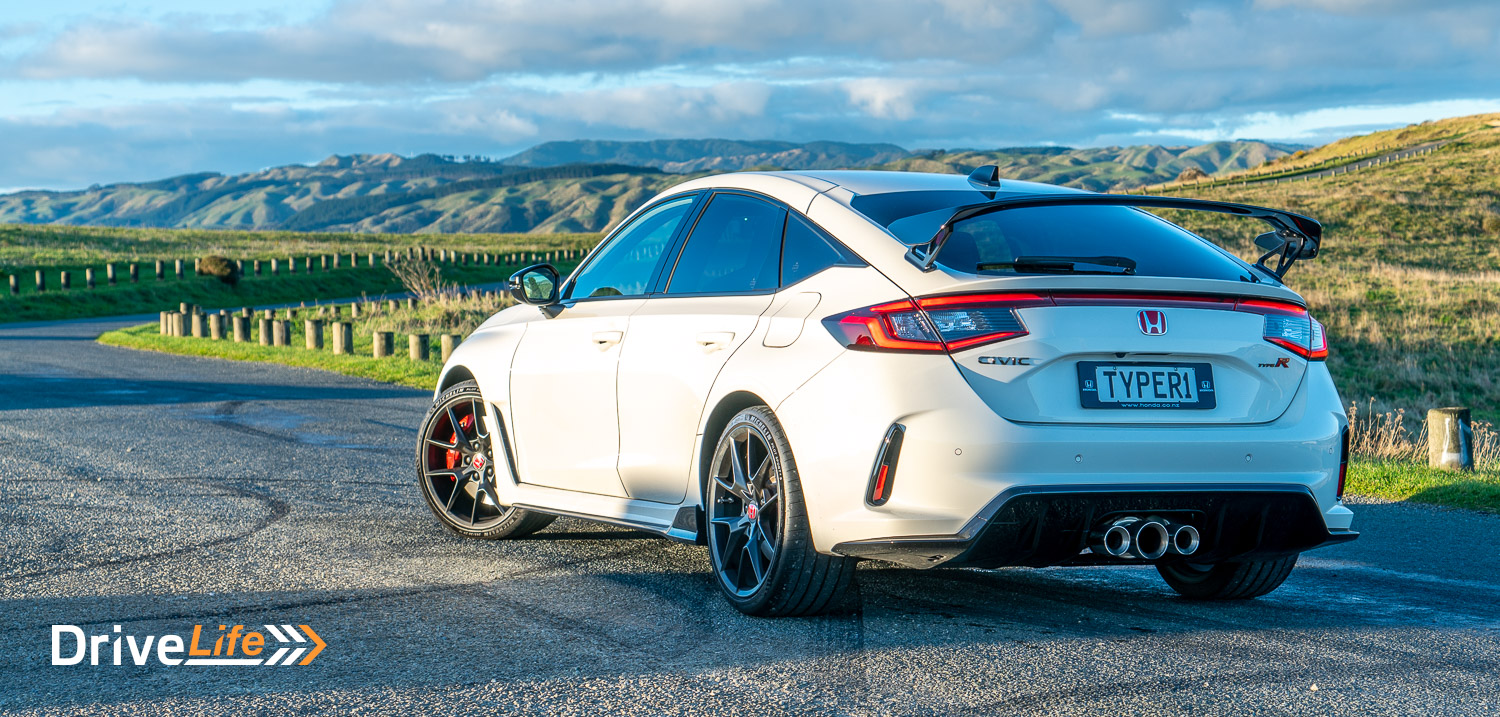
What We Like and Dislike About The 2023 Honda Civic Type R
| What we like | What we don’t like |
| Brillant engine performance Exceptional manual transmission Handling that bends physics Braking Grip New ‘grown-up’ styling High quality interior Excellent seats Hatchback practicality More fun than a barrel of monkeys | Only seats four Autohold doesn’t stay on Still a lack of engine noise |
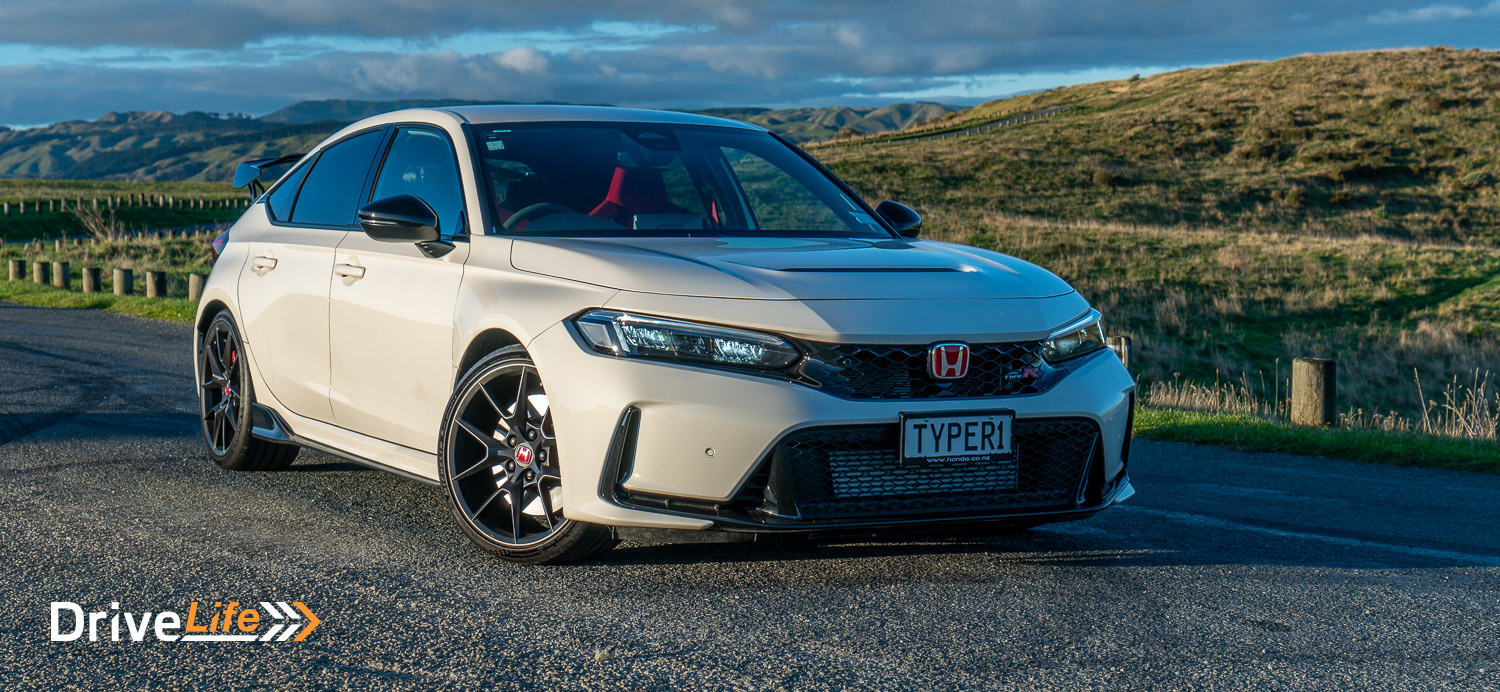
What’s In the 2023 Honda Civic Type R Range?
The body style might be similar and the badge might say Civic, but the Civic Type R really is a different beast to the standard Honda Civic. In fact, the majority of its parts are unique and aren’t shared between the two cars. In other words, I highly doubt whether anyone who is serious on a Type R would be cross-shopping this with a lower-spec Civic.
Each Civic Type R had its own model designation through the years. The original Civic Type R was dubbed the EK9, the one after was the EP3, then it was FD2, then FN2, later FK2, and until 2021, the FK8. 2023 marks the 7th generation of Civic Type R, designated the FL5.
The FL5 is powered by Honda’s K20C turbocharged 2.0-litre 4-cylinder engine, producing 235kW of power and 420Nm of torque. The engine is paired with a 6-speed manual transmission. No dual-clutch automatics here.
In New Zealand, there’s one model. It’ll set you back $72,000, before on-roads and the clean car fee. There is another spec available in Japan called the S-Grade, which strips out the Sat-Nav, A/C, parking sensors and some other bits for a weight saving of 47kg, but you can’t get it here.
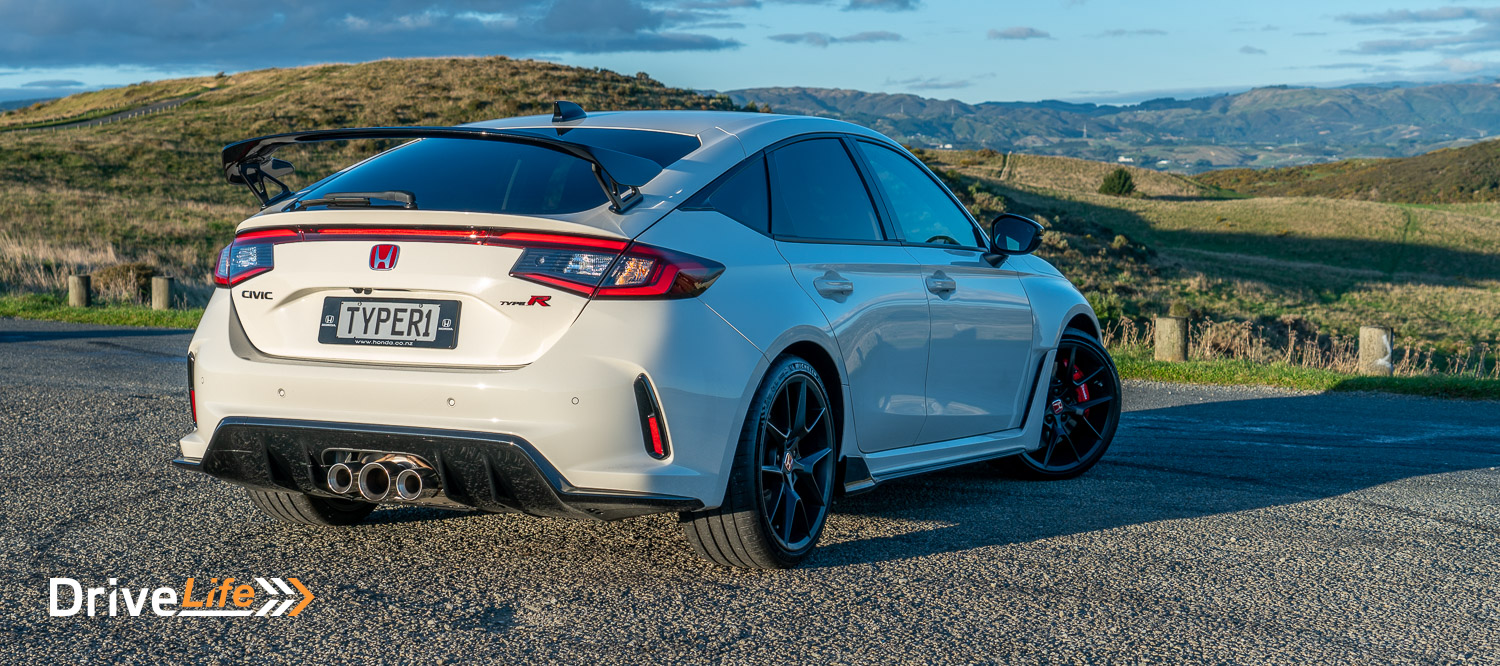
2023 Honda Civic Type R Standard Equipment Highlights
As standard, the Honda Civic Type R offers:
- 19” Alloy wheels
- 10.2″ Multifunction Drivers Display, with Type R Functions
- 9″ Infotainment with Satnav, Apple CarPlay, Android Auto and Bluetooth
- Active Noise Cancellation (ANC) speakers
- Adaptive Cruise Control
- Alcantara Steering Wheel
- Alloy Sports Pedals
- Auto Dimming Rear View Mirror
- Auto Folding Electric Mirrors
- Auto Rain Sensing Wipers
- Dual Zone Digital Climate Control
- Honda ‘LogR’ Performance datalogging App
- Illuminated Driver & Passenger Mirrors
- Immobiliser Security System
- Intelligent Auto Headlights
- ISOFIX
- Keyless Entry with Remote Central Locking
- LED Daytime Running Lights (DRL)
- LED Headlights
- LED Sequential Indicators
- LED Tail Lights
- Lightweight Reclinable Bucket Front Seats, with Red Suede Seat Trim
- Parking Sensors – Front and Rear
- Push Button Start/Stop
- Rear Privacy Glass
- Reversing Camera
- Smart Proximity Key with ‘Walk Away’ Door Locking
- Titanium Shifter
- Type R Exclusive Interior Finishes with Serial Build Plate
- Wireless Phone Charger
With great performance comes great responsibility. So naturally, the Civic Type R is laden with safety equipment. You get:
- Adaptive Cruise Control (ACC)
- Agile Handling Assist (AHA)
- Auto High-Beam Support System (HSS)
- Blind Spot Monitoring
- Collision Mitigation Braking System (CMBS)
- Driver Attention Monitor
- Emergency Brake Assist (EBA)
- Forward Collision Warning (FCW)
- Forward Collision Warning (FCW)
- Hill Start Assist (HSA)
- Lane Departure Warning (LDW)
- Lane Departure Warning (LDW)
- Lane Keep Assist System (LKAS)
- Rear Cross Traffic Alert (RCTA)
- Road Departure Mitigation (RDM)
- Speed Recognition Function
- Straight Driving Assist
- Tyre Deflation Warning System (DWS)
- Vehicle Stability Assist (VSA) with Traction Control (TCS)
There are 5 colours to choose from for your Civic Type R. These are:
- Championship White
- Crystal Black Pearl
- Sonic Grey Pearl
- Boost Blue Pearl
- Rallye Red
For more information on the Honda Civic Type R, head over to the Honda New Zealand website.
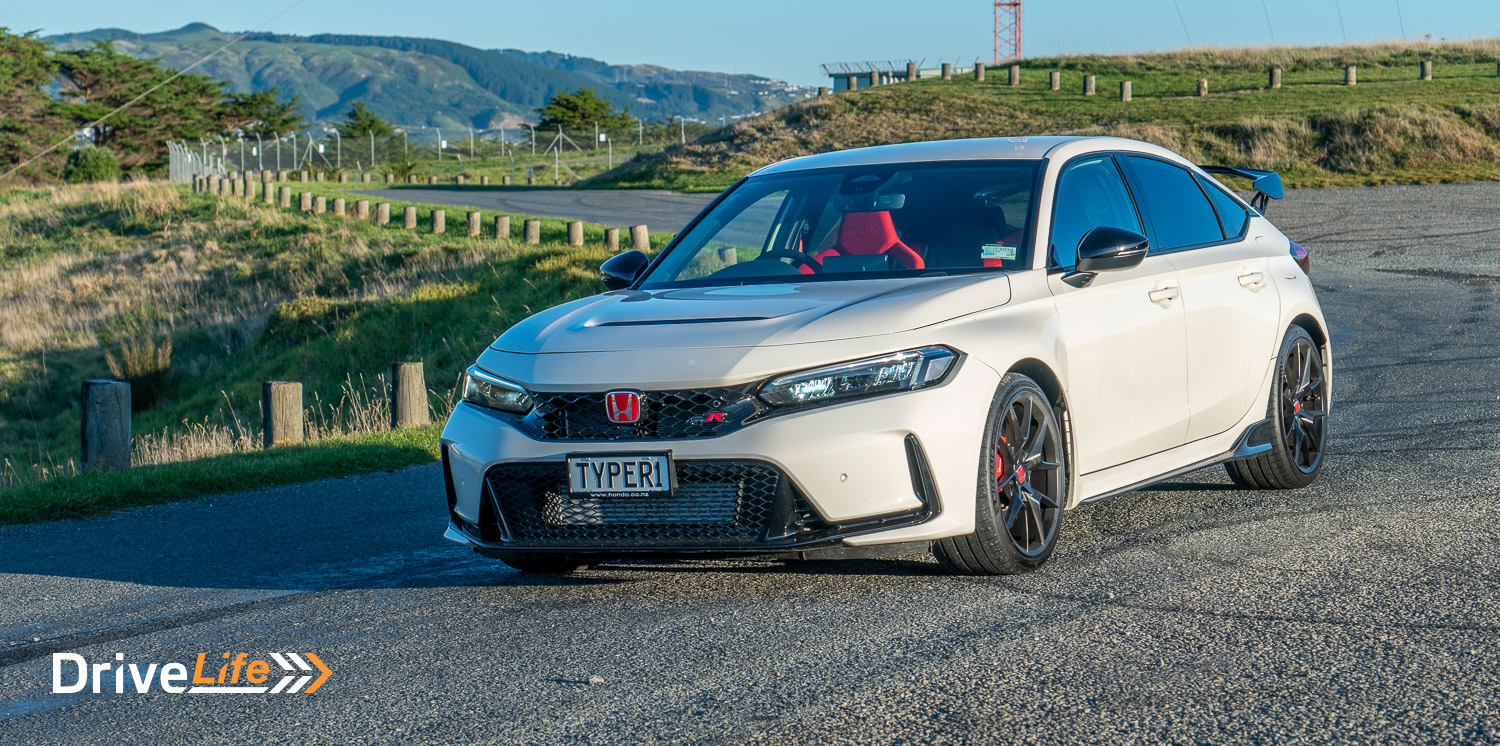
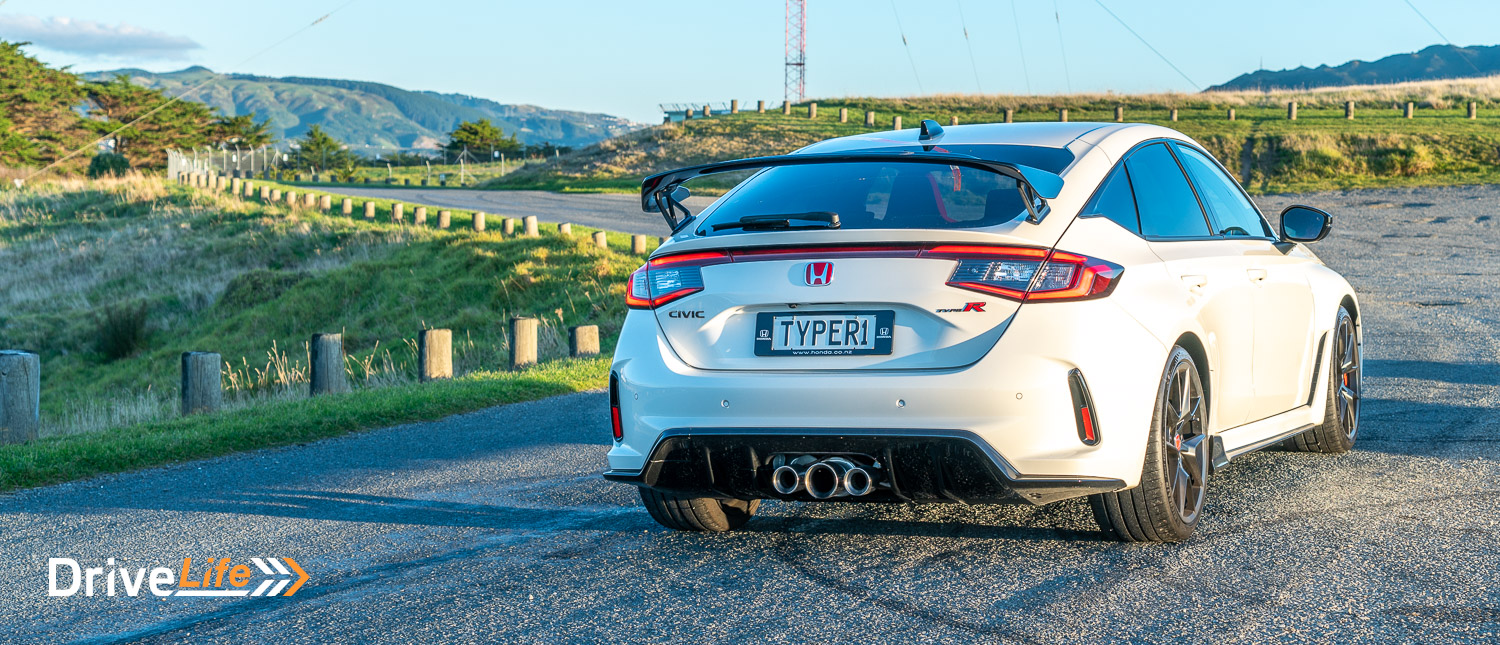
How Does The 2023 Honda Civic Type R Compare To Its Competition?
We went through a hot hatch resurgence a few years ago. Sadly, a few of those models are becoming harder to get. Here are some of your options along with the Type R, but only a few have manual transmissions.
All prices below exclude the refund or additional cost of the New Zealand Clean Car Programme.
| Make/ Model | Engine | Power/ Torque, kW/Nm | 0-100km/h, seconds | Fuel, L/100km | Boot Space, litres | Price (excl CCP) |
| Volkswagen Golf R (Auto) | 2.0-litre turbocharged 4-cylinder petrol | 235/420 | 4.8 | 8.6 | 374 | $79,000 |
| Toyota GR Corolla (Manual) | 1.6-litre turbocharged 3-cylinder petrol | 221/370 | 5.3 | 9.4 | 213 | $74,990 |
| Honda Civic Type R (Manual) | 2.0-litre turbocharged 4-cylinder petrol | 235/420 | 5.4 | 9.7 | 445 | $72,000 |
| Renault Megane RS Trophy 300 (Auto) | 1.8-litre turbocharged 4-cylinder petrol | 221/420 | 5.7 | 9.2 | 434 | $70,990 |
| Hyundai i30N Fastback (Manual) | 2.0-litre turbocharged 4-cylinder petrol | 206/392 | 5.9 | 9.5 | 436 | $66,990 |
| Volkswagen Golf GTi (Auto) | 2.0-litre turbocharged 4-cylinder petrol | 180/370 | 6.5 | 7.7 | 381 | $65,990 |
| Ford Focus ST (Auto) | 2.3L turbocharged 4-cylinder petrol | 206/415 | 5.7 | 9.6 | 273 | $61,990 |
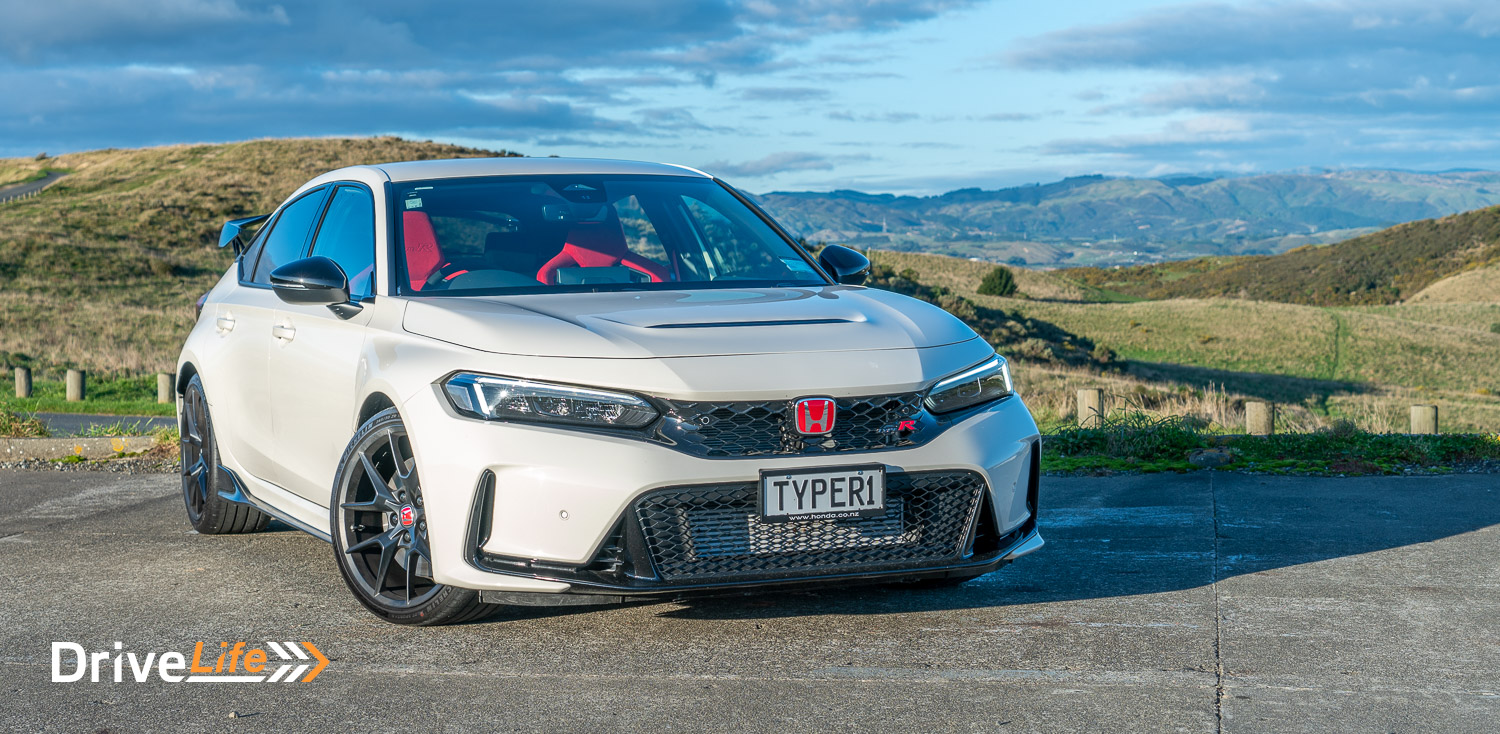
First Impressions Of The 2023 Honda Civic Type R
I’ll admit, I had some mixed feelings when I first laid eyes on images of the FL5. One part of me loved it, but another part felt slightly disappointed. The sole reason for that disappointment? It was a major departure from the FK8.
Sure, the exterior of the FK8 was polarising, but I was its staunch advocate. I loved the FK8 Type R’s mentalist styling. It was unapologetically angular, with a snarling face, tri-pipes and a big-ol’ bugger-off wing on the back. It was as if someone had commissioned an 8-year-old to design it, and that made it brilliant.
The FL5 is less polarising, less in your face. The sharp angles and exterior fascias have been substituted for smoother features, integrating its flared arches, side sills and bumpers in a way that gives it a slightly more subtle athleticism, compared with the Civic-with-a-body-kit aesthetic of the FK8.
In other words, the FL5 has been styled by an adult.
That said, the FL5 hasn’t gone all subtle and sensible. Look past the nose, and you’ll still see a big black wing stuck to the rear hatch and a fresh set of tri-pipes down below (which now have a new design).
So, now that I’ve lived with the FL5, have I grown to love it? In fact, I have. If anything, I may actually like it more than the old car. Perhaps I am getting old.
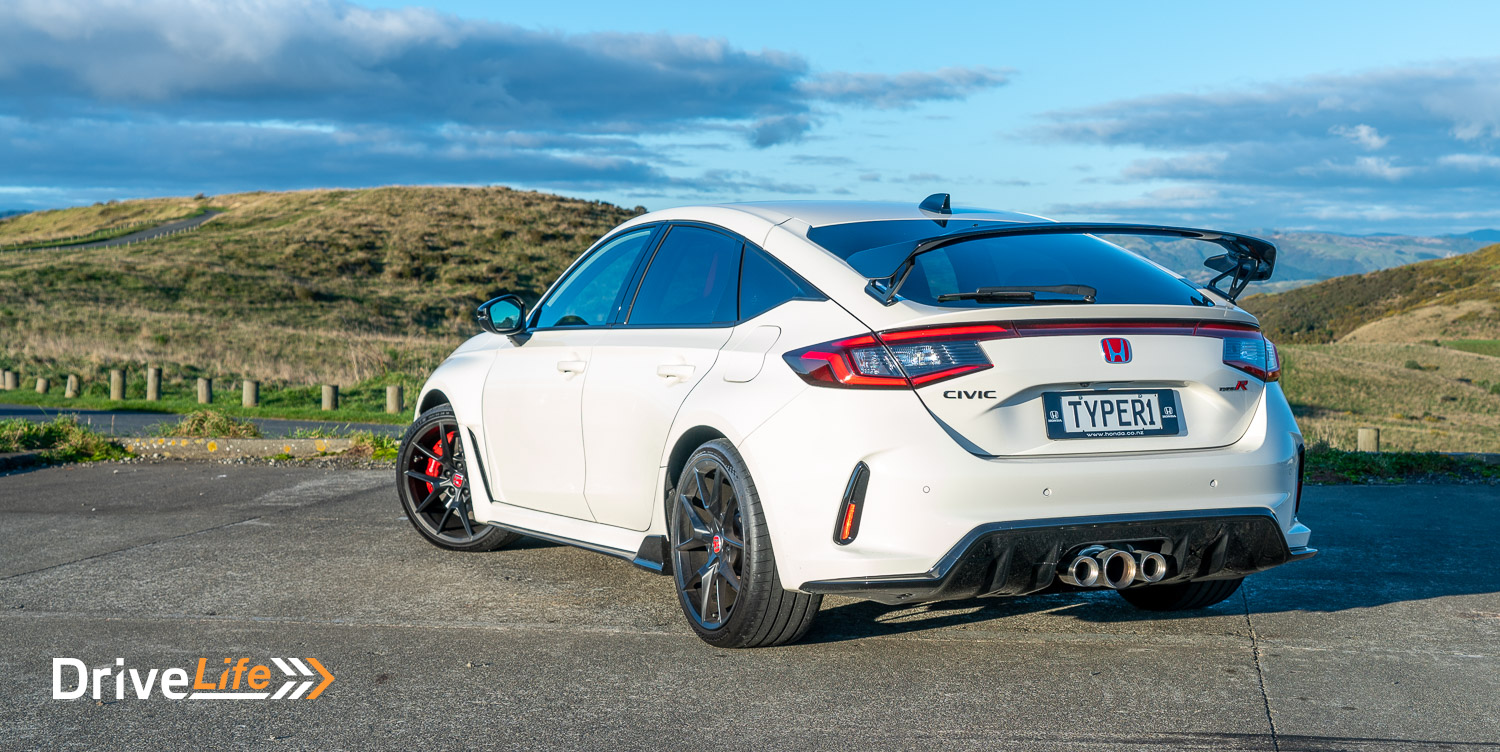
What’s The Interior Like In The 2023 Honda Civic Type R?
It’s red. That pretty much sums it all up.
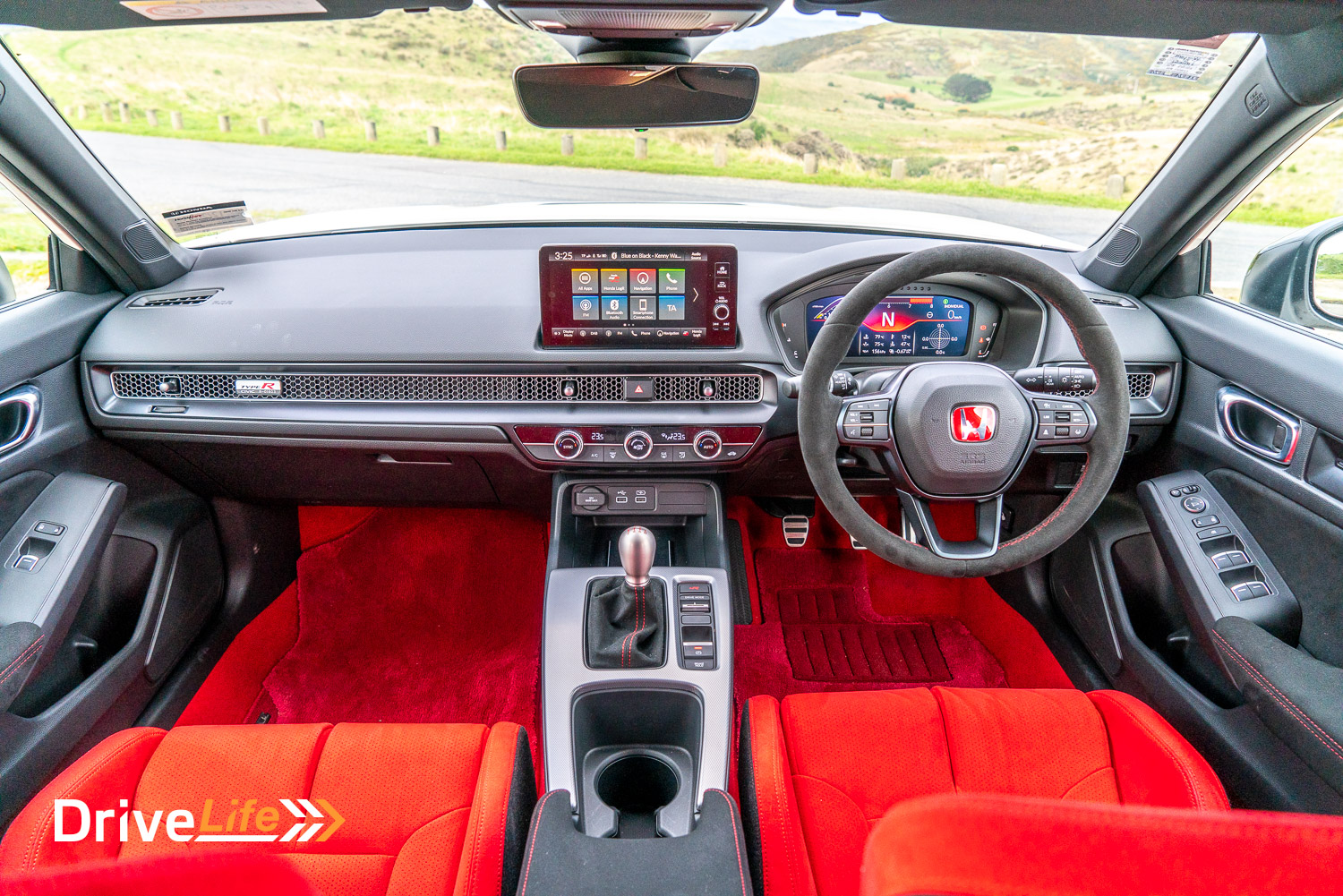
Well, how much red is there? Yes, said Honda.
So, we have red. Red suede seats, red carpet, red floor mats, red stitching, red door lighting and red dashboard graphics. Oh, and the seatbelts, they’re red too.
Why so much red? Because life isn’t always grey and boring. More accurately, it’s a throwback to the red interior of the original 1990’s EK9 Civic Type R. One could even argue that a red interior is as synonymous with the Type R as the Championship White exterior colour.
Sure, it’s a pain-in-butt to keep all these red bits clean, but it’s also one of the few interiors that’ll make anyone instantly smile upon seeing it.
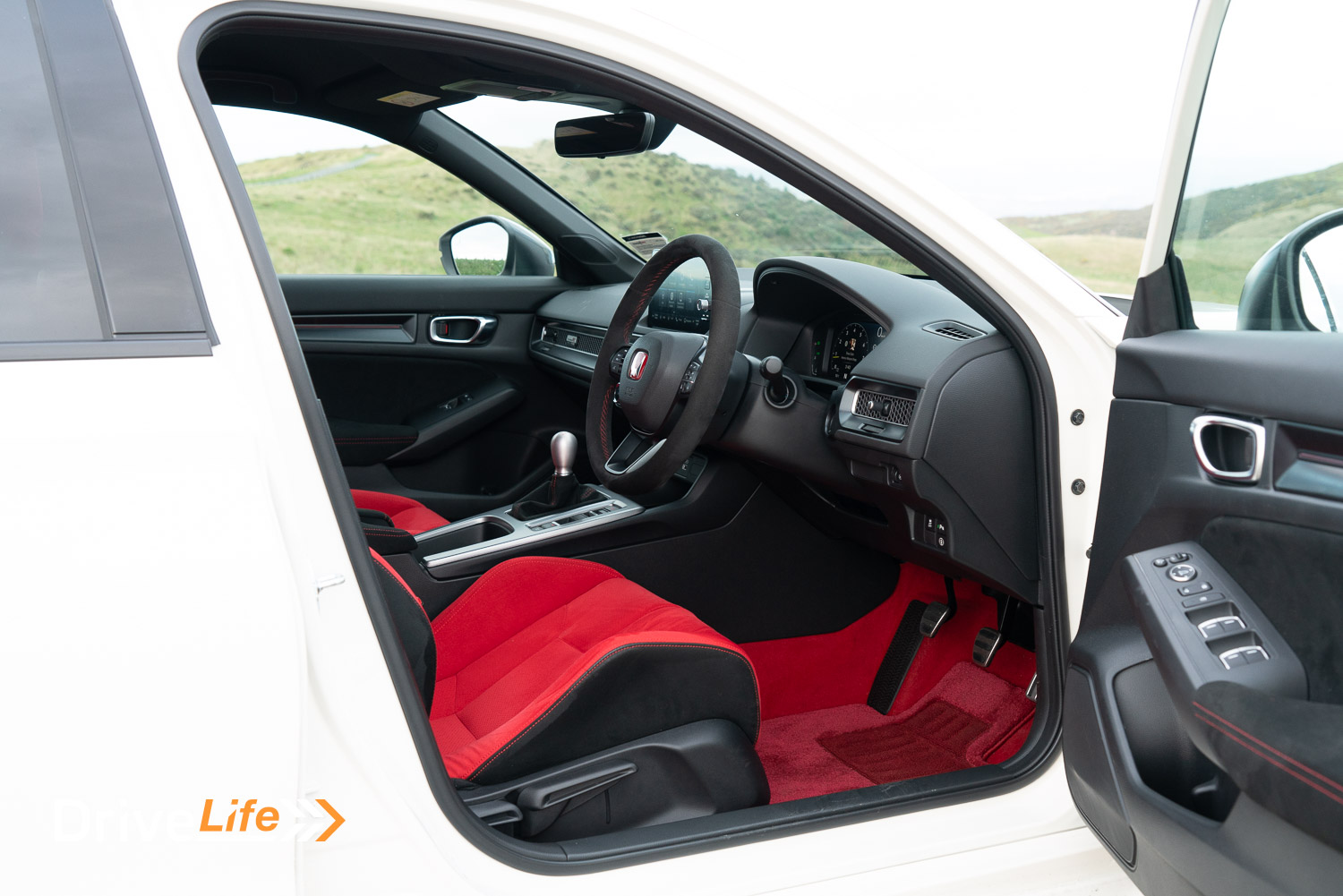
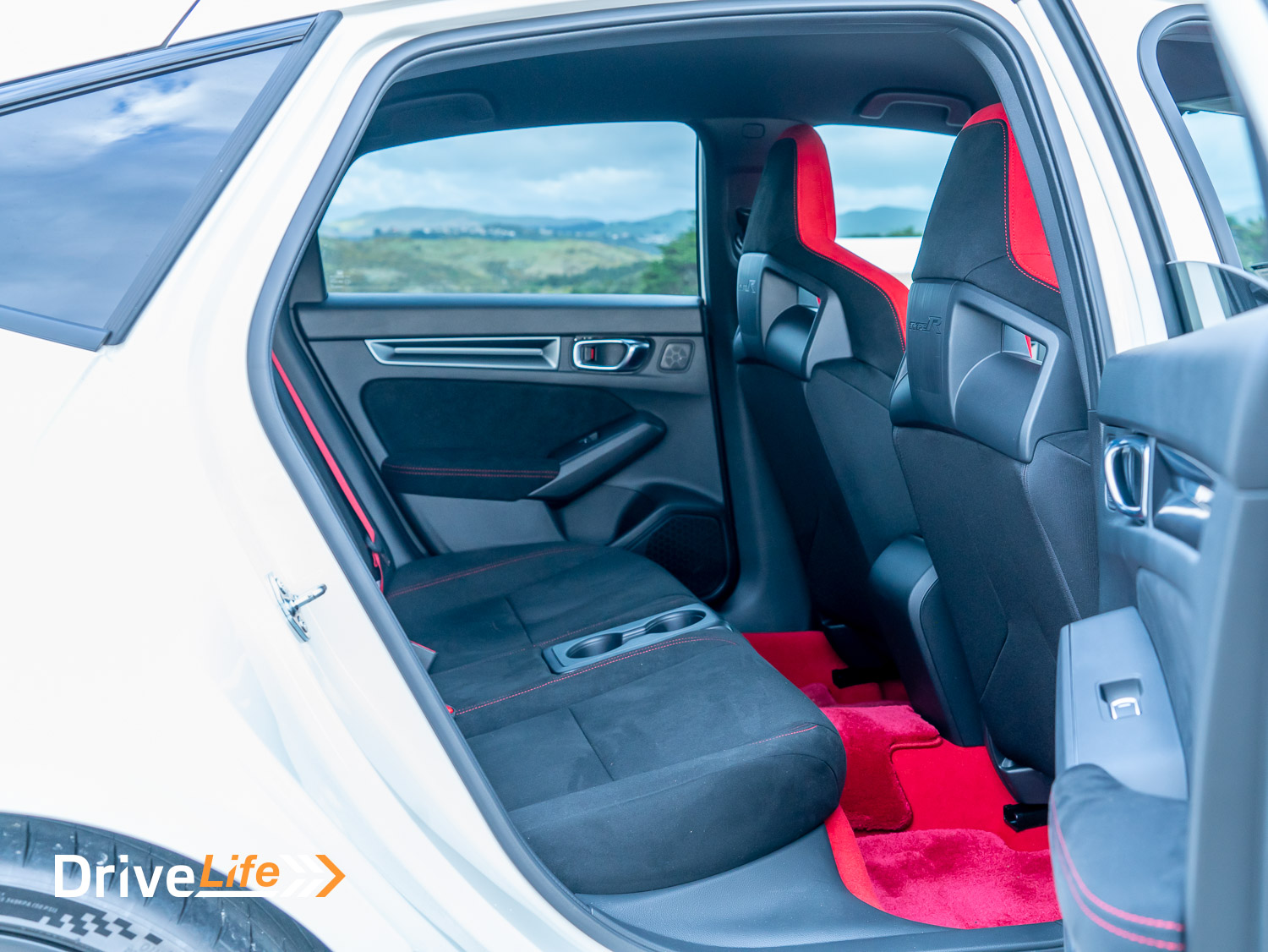
As for smiles, there’s plenty to be had from behind the wheel of the Civic Type R, even before you’ve hit that pulsing red engine start button. Because behind all the red is probably one of the most well-thought-out interiors in a modern performance car.
Firstly, there’s the superb driving position. You sit low, with your left arm falling perfectly to the shifter and console. The steering wheel can be perfectly positioned and the pedal box is optimally spaced for those that want to try their heel’n’toe.
Compared to other hot hatches, the Civic Type R’s driving position is an absolute masterclass. Too many hot hatches commit the offence of having awkward driving positions, usually from the seat being too high. The Toyota GR Yaris, Ford Focus RS, and the Fiat 124 Abarth all spring to mind.
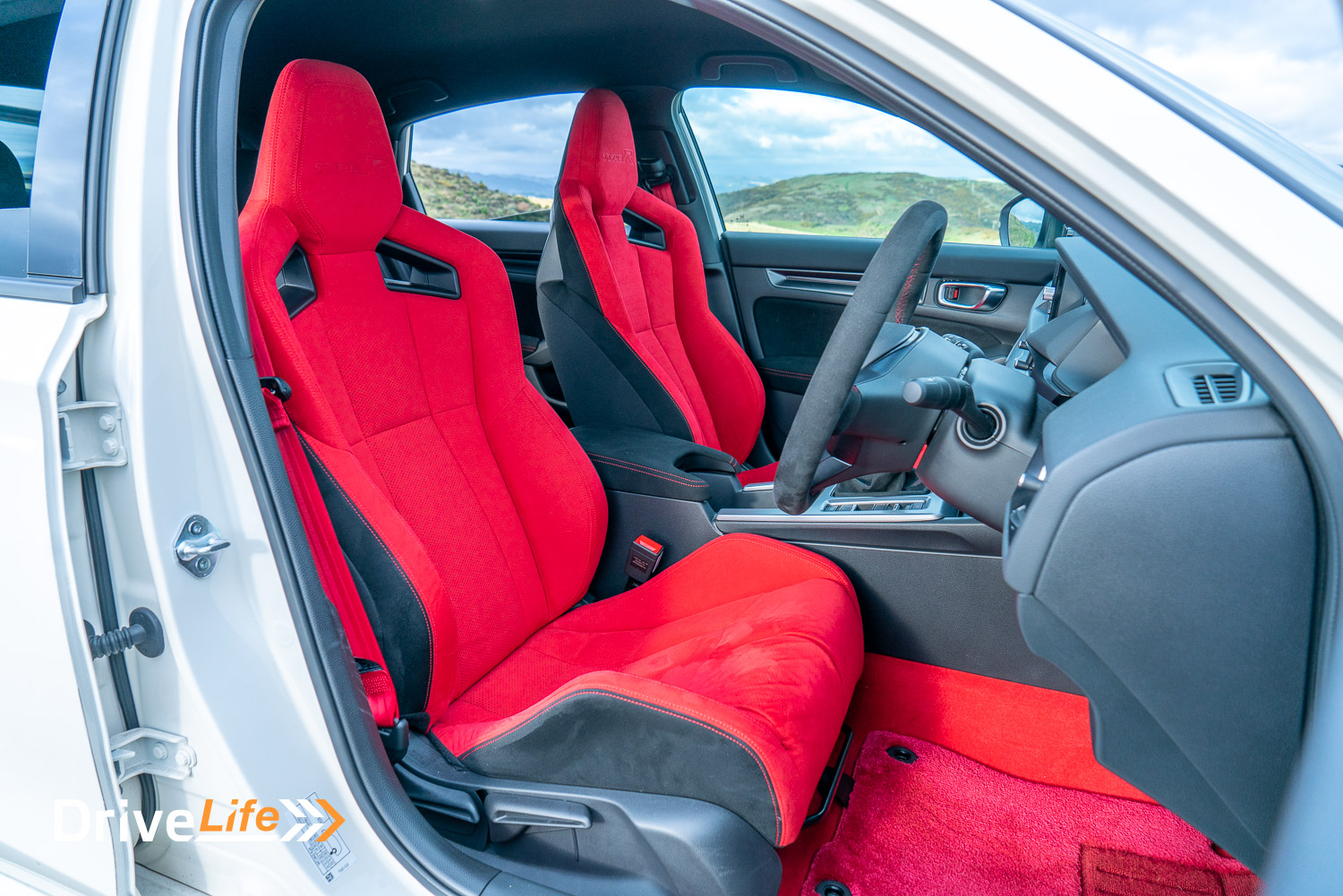
Honda’s cabin mastery also extends to the front seats. The bucket seats have near-perfect bolstering, confidently yet comfortably cradling your sides and supporting your body’s weight. This, plus the grippy red alcantara upholstery will ensure you’re fixed firmly in place as you’re flung around the race track. But even after you’ve left the track, the seats have enough cushioning to be comfortable for the journey home.
Honestly, the Civic Type R’s seats are probably among the best seats I’ve had the privilege of parking my ass in. They’re that good.
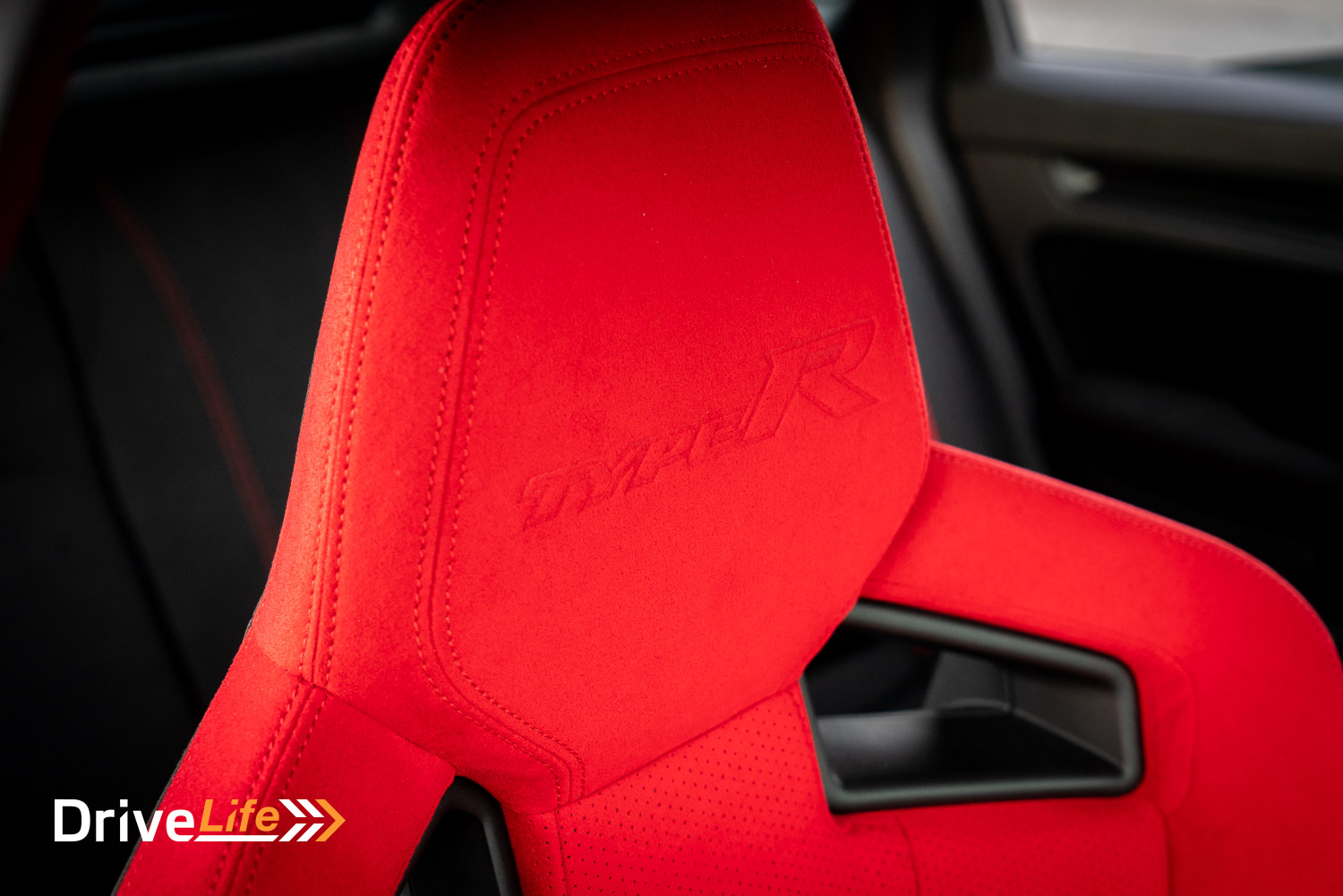
As we’d said earlier, the Civic Type R is a “Civic” in name only, mainly because the majority of its parts are unique to it. Although, there are still some carry-overs which mostly present on the inside. It begins up front with the dashboard, climate controls and infotainment being shared with the standard Civic. The Type R gains a handful of premium touches, including an aluminium-textured centre console garnish, plus the unique Type-R build number plaque (which is now on the dash), but otherwise it’s virtually the same.
By no means is this a bad thing, because the ordinary Civic has an excellent interior and the same qualities are transferred over to the Type R. The build quality is excellent and Honda has found a comfortable blend of physical controls and technology in the cabin, making it an approachable and usable space. Each of the physical controls have a convincing feel and have a satisfying clicky tactility.
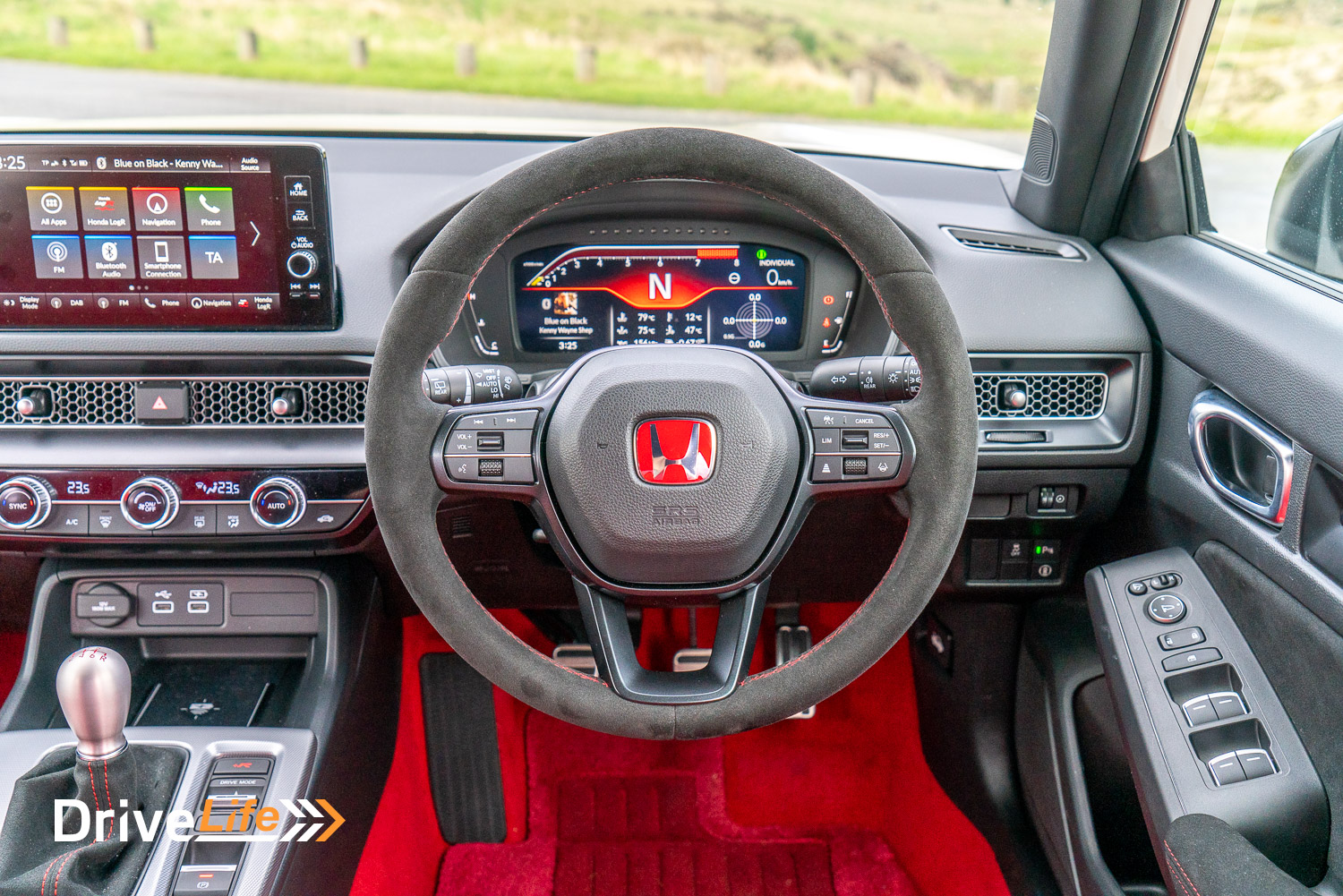
The 9’’ infotainment atop the dashboard follows similar user-friendly principles. Its resolution is excellent, as are the colour and black levels. The tile user interface is clear and easy-to-use, and it’s reasonably responsive. The system does have its Achilles heel, which is the reversing camera. The reversing camera resolution isn’t great.
Of course, Honda hasn’t simply slapped in the unit of the standard car and said ‘job done’. The Type R has onboard Honda’s LogR performance data-logging app, which provides several metrics and telemetries for racetrack use. LogR can also be accessed on your Smartphone too, in case you’re interested in showing off to your mates. For an in-depth on LogR, check out Fred’s review of the FK8 Type R.
The infotainment is paired to an 8-speaker audio system, which might seem like a downgrade compared with the ordinary Civic, which has a 12-speaker Bose audio system as standard. Regardless, the Type R’s audio quality is respectable, and according to Honda, the Type R speakers feature active noise cancellation, like you’d find in a pair of headphones. To be completely honest, I wasn’t aware of this until I’d looked at the spec-sheet.
More noticeably, the Type R’s speakers are engineered to amplify the engine noise and pump it into the cabin, which Honda calls Active Sound Control (ASC). More on this later.
While you might be down a few speakers, the Type R does gain a full digital dash cluster. The cluster has three main displays, each with unique graphics which vary depending on the drive mode.
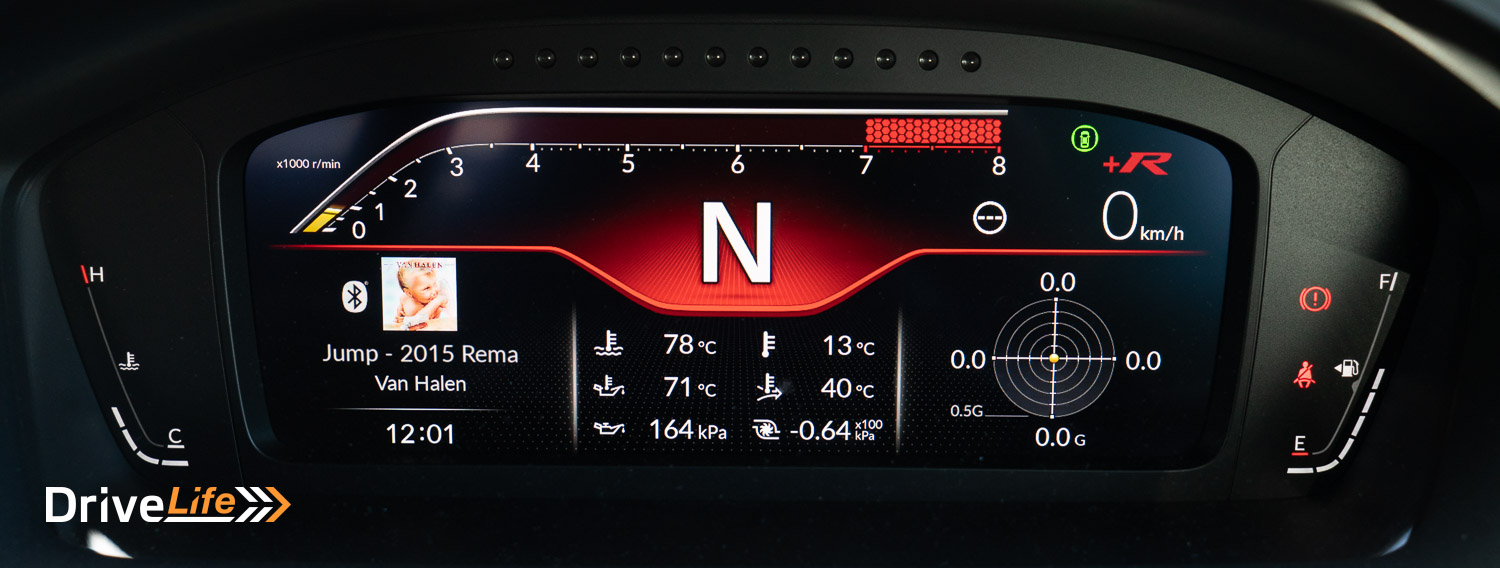
The graphics for both Comfort and Sport are fairly conventional, although it changes drastically when you toggle into +R mode (or Individual, if specified). In +R, the Civic Type R ditches the sensible dials for a highlighted tachometer, a gear position display and it introduces a series shift lights. There’s also some configurability between the screens, which allow you to toggle between some performance metrics, such as a lap timer, g-meter, digital boost gauge and brake and throttle percentages, to name a few.
Personally, I found the +R gauges to be better than the other two for daily driving. I suspect many owners would feel the same way. That, or it’s indicative of my driving style.
Anyway, that’s enough of the front. What about the back?
Well, it’ll certainly be quieter in the back seats, and maybe not because you’ll have dazzled your passengers with your shit-hot driving.
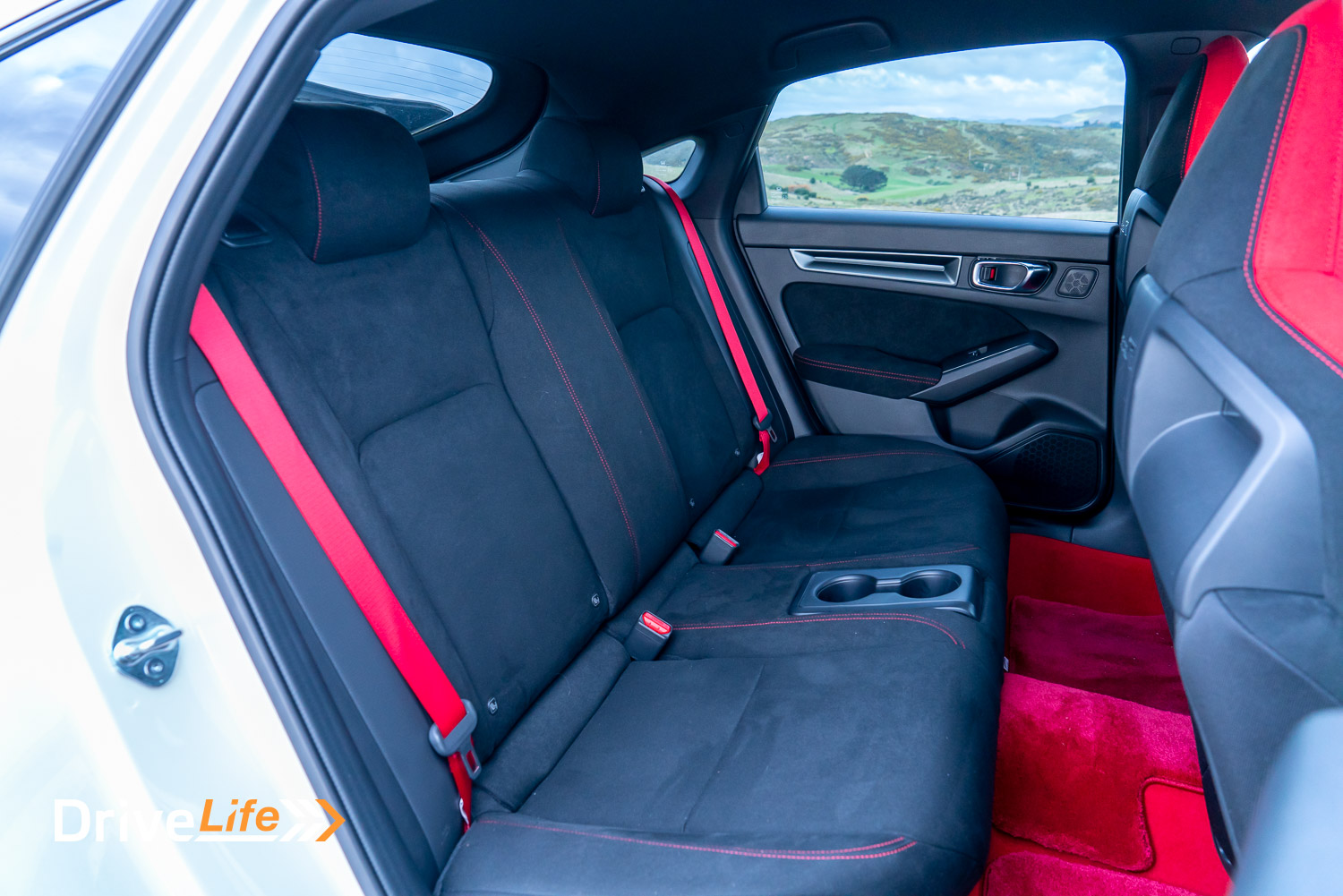
It’ll be quieter, because the Civic Type R only has seating for two passengers in the back. The middle seat has been replaced with a plastic inlay with two cup holders. I suppose that’s points-off the Civic Type R’s practicality score.
That said, those two rear passengers will be comfortable, thanks to the Civic Type R’s generous provision of head and leg room for those in the cheap seats. Honda has also wisely included a couple of ISO-FIX points back there too.
Speaking of generous, the boot space is huge. There’s 449L with the rear seats up, which could put some SUV’s to shame.
See, it is a practical (ish) choice!
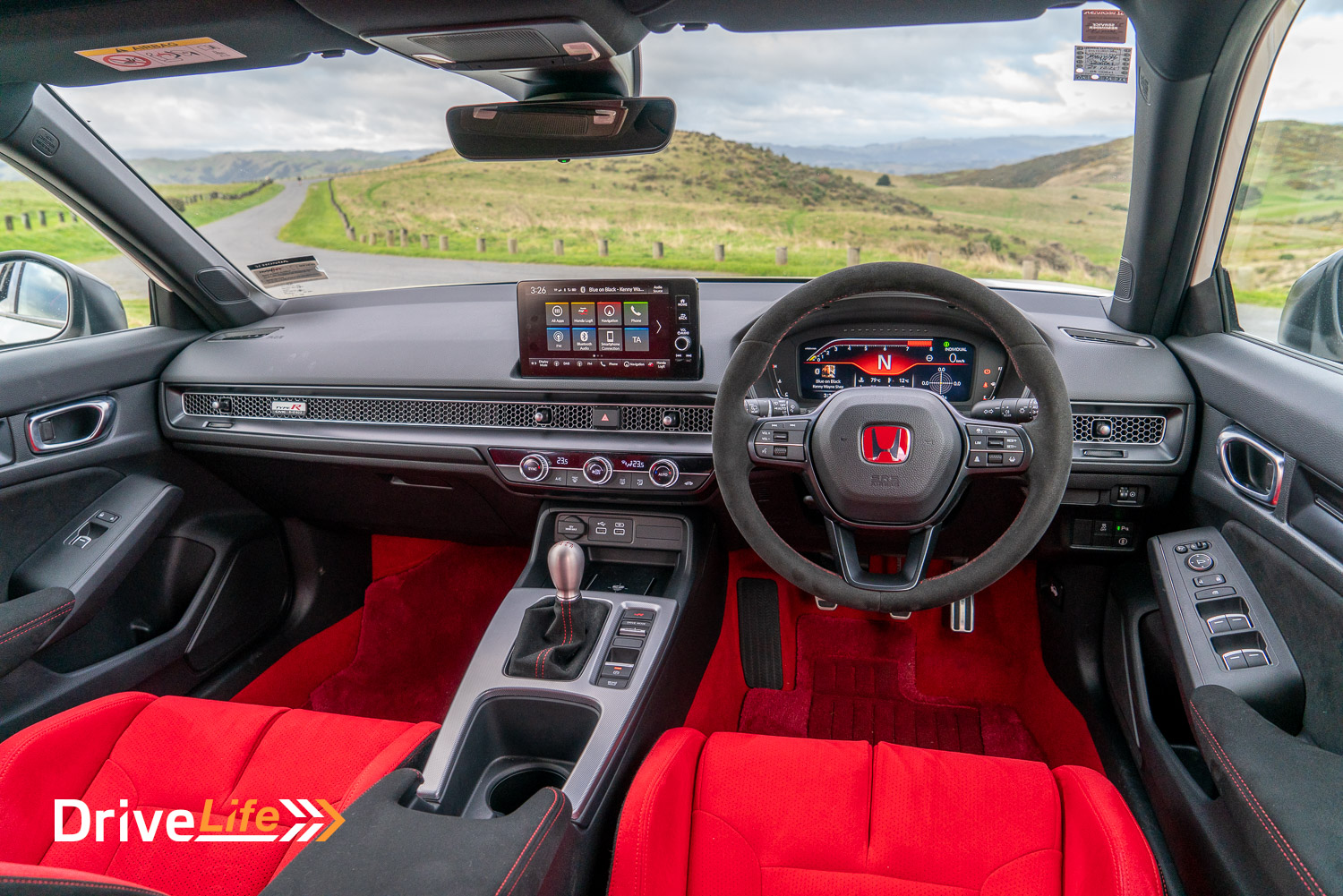
What’s The 2023 Honda Civic Type R Like To Drive?
In a few ways, the Honda Civic Type R is analogous to the Porsche 911. Porsche has spent more than 60 years engineering the 911, incrementally evolving arguably one of the greatest sports cars in the world.
Honda hasn’t been at it for quite as long as Porsche, with the Civic Type R having only turned 25 years old as of 2022. Although in a quarter of a century, Honda has evolved the Civic Type R into one of the most venerable hot hatches on market, pushing the capabilities of front-wheel drive to its extreme.
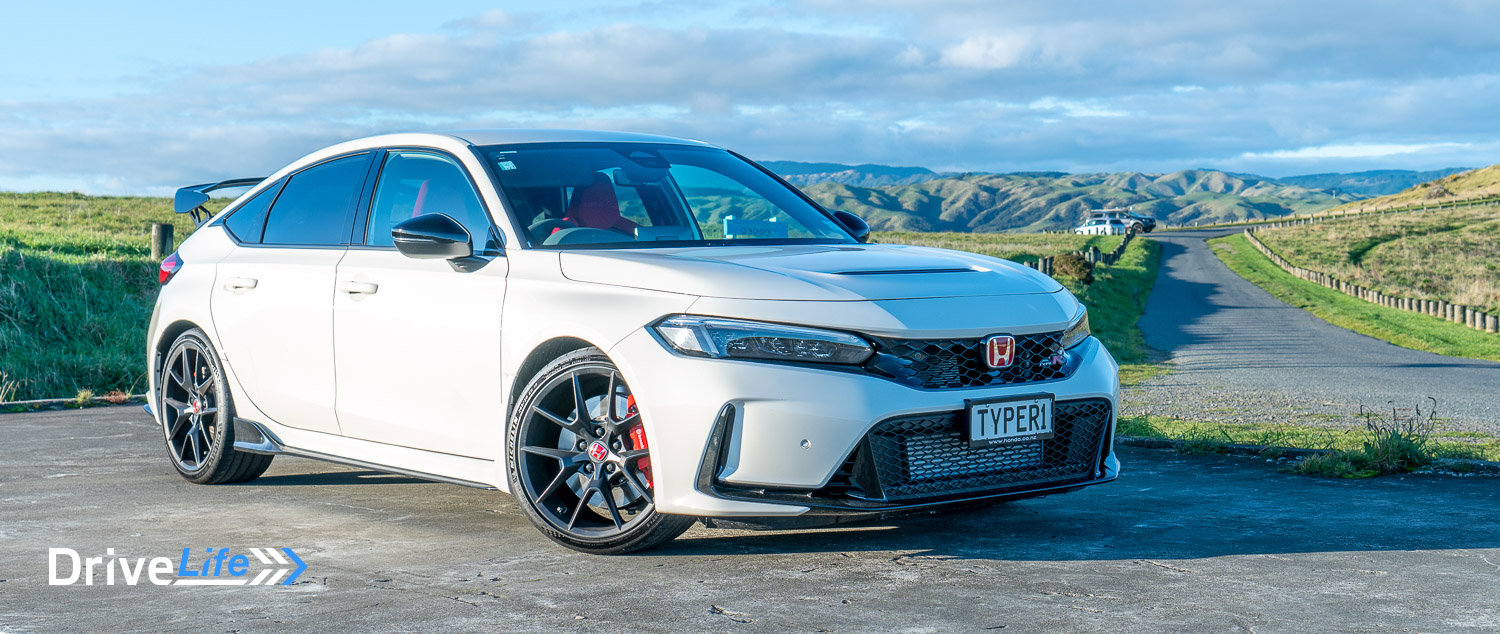
Like the 911, modern versions of the Civic Type R seem in stark contrast with the original. The FL5’s track-focus is rather different to the playful miscreant that was original EK9 generation Civic Type R. Although, it’s the iterations between where you see how the Type R has evolved.
As evolutions go, the FL5 shares many mechanical components with the outgoing FK8 Civic Type R, although those differences aren’t just skin deep. For starters, production of the FL5 has shifted out of Swindon, England – where the last two Type R’s were built – moving back to Honda’s Yorii factory in Saitama, Japan. With Japanese manufacturing underscoring its production, the build quality and paint finish have significantly improved compared with the FK8. Sorry England.
Although, Japan isn’t completely throwing out England’s homework. Instead, they’re focused on taking the best of England’s work and improving upon it. Continuous improvement, we would call it. An art the Japanese would call ‘Kaizen’. The time invested into ‘Kaizen’, has resulted in a Civic Type R that is, on paper, incrementally better than its predecessor.
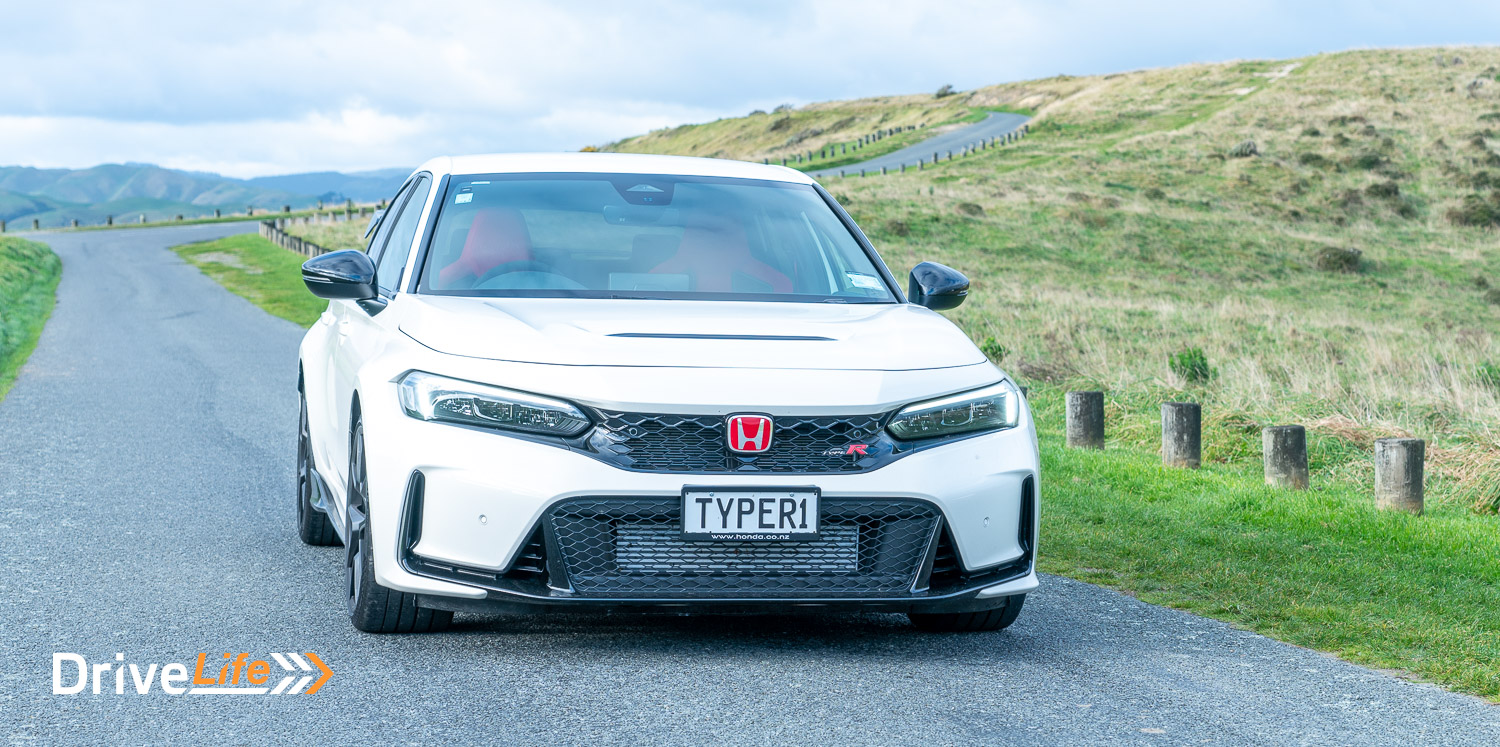
Under the FL5’s bonnet is Honda’s mighty K20C turbocharged four-cylinder VTEC engine, carried over from the outgoing car. For the FL5, Honda has made many tweaks, including a new turbocharger which has a different housing and turbo impeller design. Supporting the new turbo is a bigger radiator and a better water jacket design. The radiator intake is also wider, increasing by approximately 45%, Honda say.
A fresh inlet manifold with a new plenum design helps the Civic Type R breathe better, as does a new exhaust which has an improved flow rate of 13%.
The results of all this tinkering? The K20C engine in the FL5 outputs 235kW of power at 6500rpm and 420Nm of torque between 2,600-4,000rpm, up 7kW and 20Nm over the outgoing Type R. The peak figures mightn’t have moved much, though Honda’s fettling delivers a broader mid-range across the board, providing the already potent powerplant with even more punch.
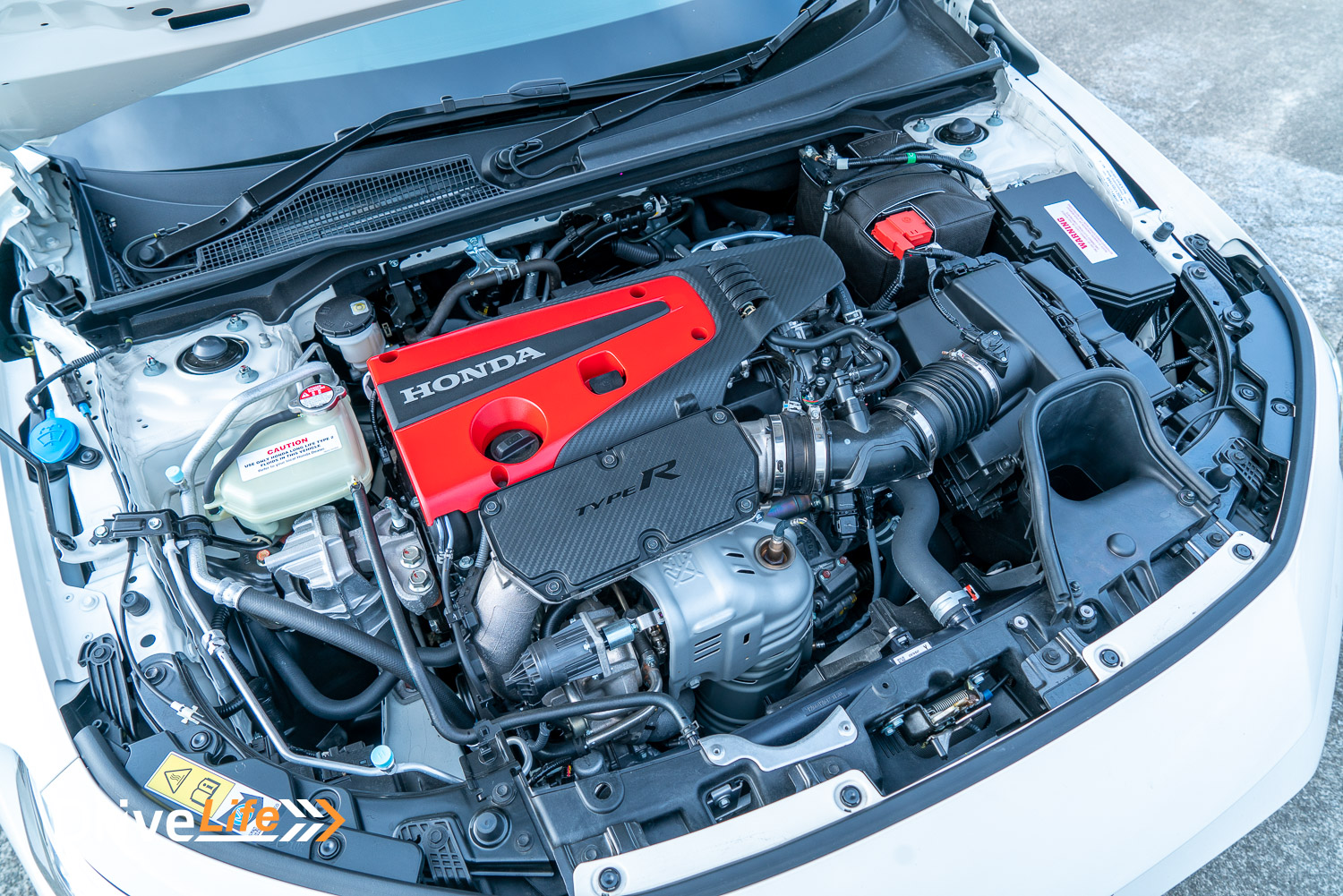
The engine is paired with Honda’s 6-speed manual gearbox, which has a new flywheel that is 18% lighter. The gearbox linkages, which were already fantastic, have been improved. Why? Because Honda are perfectionists, that’s why.
Then, there’s the body, chassis and suspension. The body has been made stiffer, much stiffer. Someone at Honda has a glue problem because the amount of structural adhesive used in the FL5 has nearly quadrupled! The FL5’s chassis is also slightly longer, and Honda will tell you that rear torsional stiffness has increased by 15%.
The FL5’s adaptive damper tuning has been adjusted and its bushings have been swapped out for, you guessed it, something stiffer. The front and rear track are wider, as are the tyres which have been upgraded to a 265/30/R19 Michelin Pilot Sport 4S versus the 245/20/R20 Continental tyres on the outgoing FK8. Interestingly, the wheels have lost an inch. The FL5 wears 19’’ alloys versus the 20’’ alloys worn by the FK8.
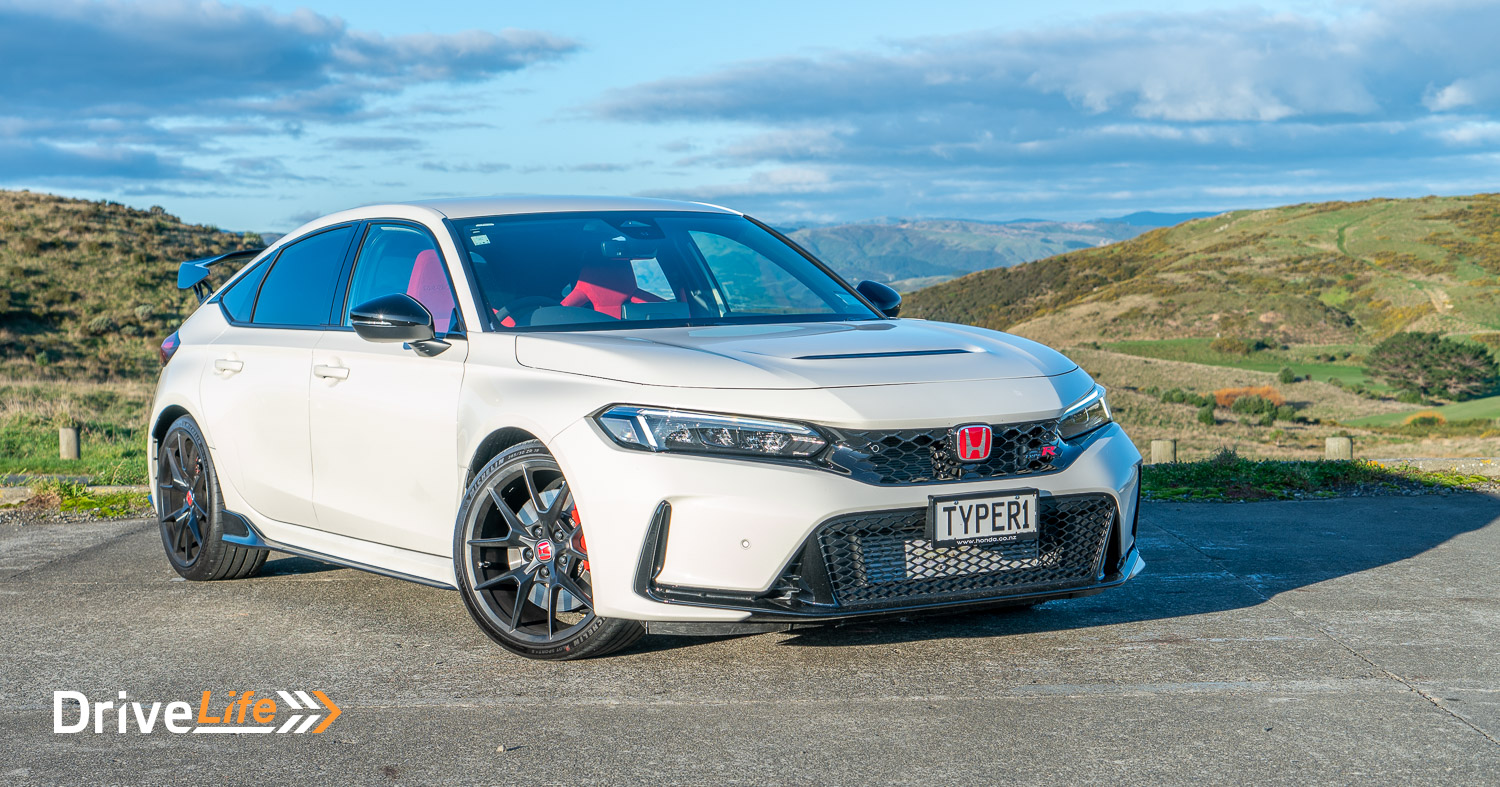
All of these on-paper changes have already put results on paper. The FL5 Civic Type R has reclaimed the front-wheel drive Nürburgring lap record, and it also toppled the same record at Suzuka Circuit.
So, by nearly every metric you can think of, the new Civic Type R is better than before. But, what about in the metric that truly matters? Is it actually more fun than the old car? Fortunately, all of these changes have made the performance of Civic Type R brighter and more engaging than ever before.
The upgraded K20C engine lays on thick power in the mid-range, and the lightened flywheel allows the engine to rev freer and faster to red-line. The result is an engine that feels lively, delivering its power faster and more aggressively.
Mash your right foot into the red carpet, and the Civic Type R will sprint from 0-100kph in a claimed 5.3 seconds, charging onto a top speed of 274kph.
More power more quickly means more gear shifts, and in a Civic Type R, more shifting means more smiles. If you’ve ever experienced a performance Honda of the past, you ought to know that Honda are masters of the manual transmission. But, for those without the privilege, the shifter action in the Civic Type R is slicker than James Bond in a silk suit.
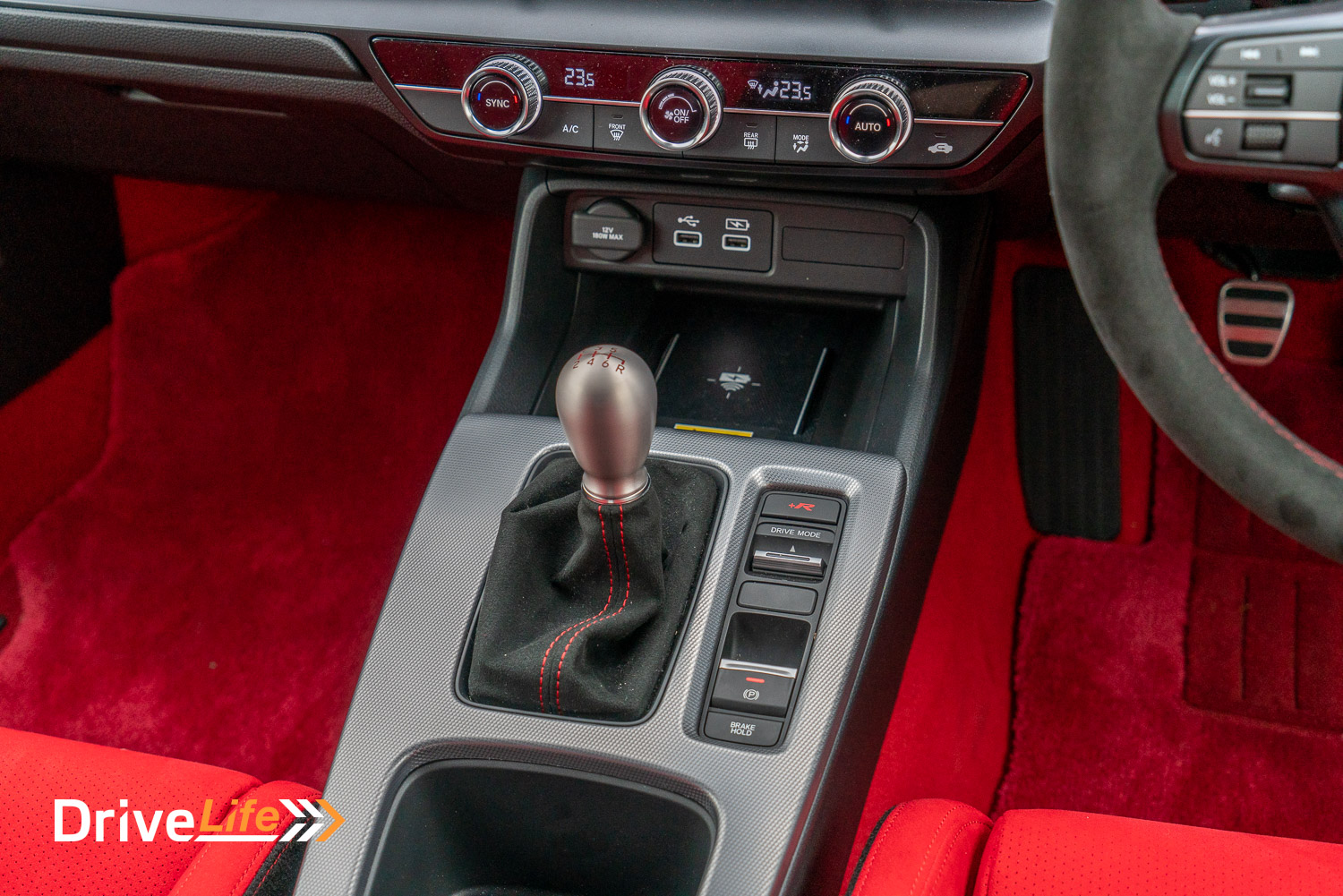
Its throw is short and it’s beautifully tactical. The clutch is superbly weighted, and the auto-rev matching software fills the gaps between downshifts better than any other hot hatch I’ve experienced.
Honestly, I don’t quite know how Honda has done it. They’ve taken the already superb transmission from the FK8, and made it better. It’s one of the best manual transmissions on the market today, for sure.
Between this potent engine and the superb gearbox, the FL5 is engaging even driving in a straight line. However, the FL5 was never designed to be a straight-line missile. If it were, Honda probably would have sterilised it with a dual-clutch and 4-wheel drive.
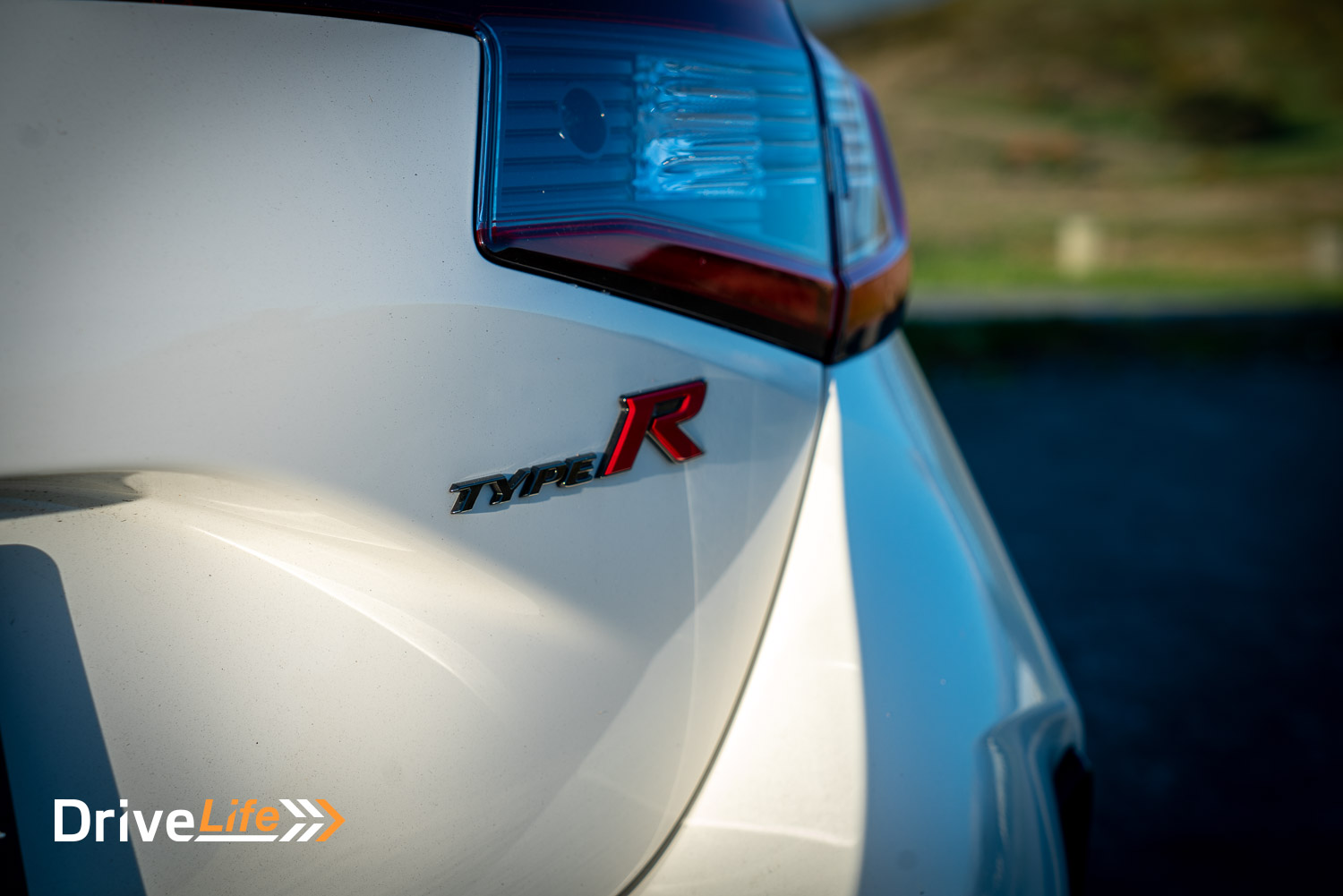
Instead, every single Civic Type R has been about the bends, and, boy, the FL5 can defy physics.
The way this FL5 can obliterate a corner is beyond belief. Its lightweight chassis makes the Type R feel fast on its feet. It’s direct, changing direction quickly while the chassis naturally rotates underneath. The stiffer rear also aids with rotation on the turn-in, allowing the FL5 to set into the corner sooner. Compared to the FK8, the FL5 feels less front biased and it certainly feels nimbler.
Honda has achieved this agility gain without sacrificing a modicum of grip either. Honestly, the FL5 has more cornering grip than most drivers will have the nerve to test.
The cornering balance and stability are also phenomenal. In fast corners, The Type R has an ability to set into a corner and flow when under load. Even when pushing it hard, the Type R never felt out of kilter. Many drivers will be astonished by their ability to quickly and confidently carve a corner in the FL5.
The steering, although electric, weights up nicely through the wheel. The 2-piece Brembo brakes are also brilliant, delivering a solid bite and great texture through the alloy pedal.
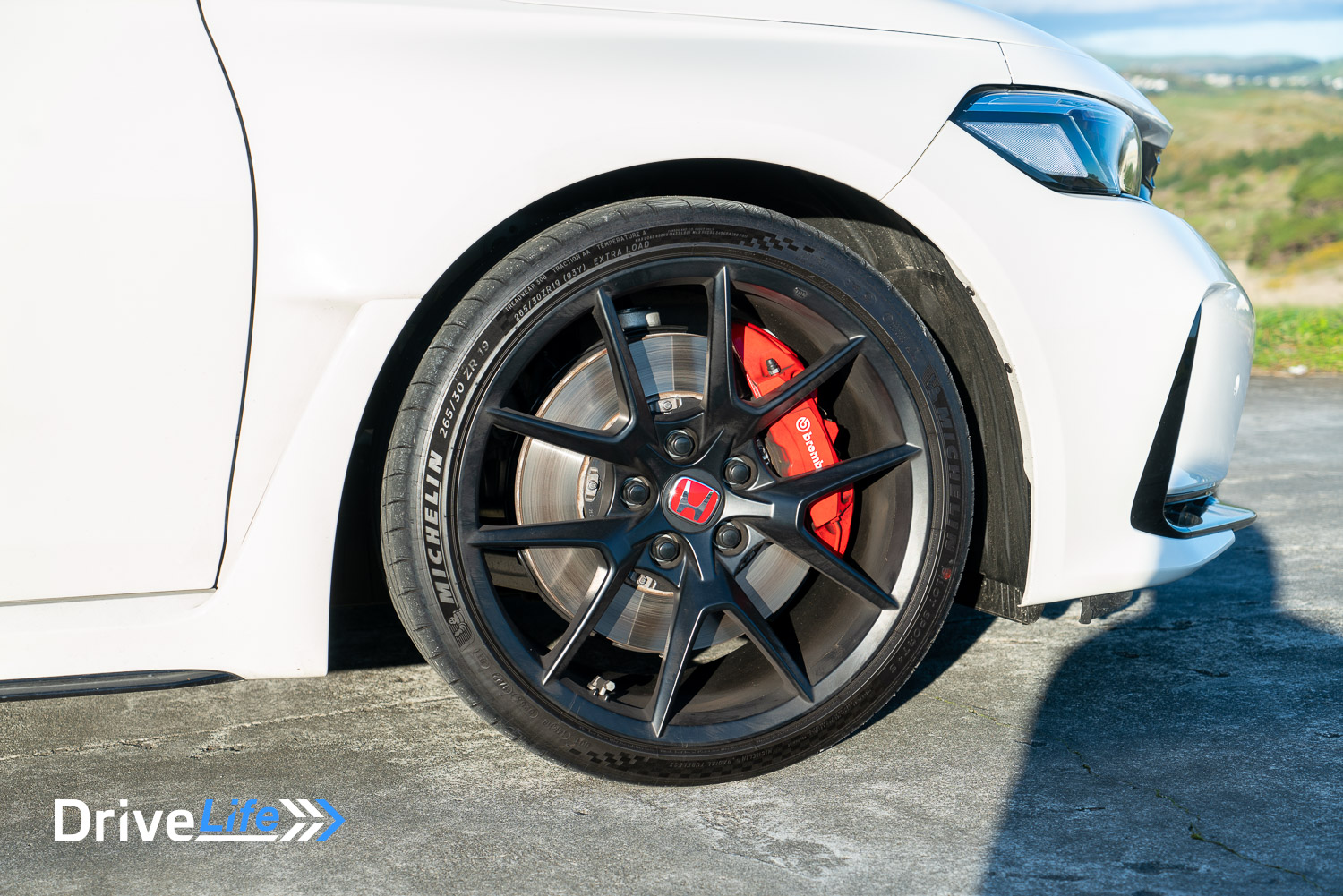
Despite the Type R’s immense grip, you can still make it break traction. Give it a boot-full of throttle from a standstill and it will generate a hilarious amount of axle tramp. For me, this adds to the unruly experience of a hot hatch, even if the local constable may frown upon it.
More impressively, you’ll seldom encounter any torque steer in the Civic Type R. Honda’s engineers have worked to eliminate torque steer with the third iteration of their dual axis strut suspension. Essentially, it separates the steering knuckles and the dampers, increasing steering axis flexibility and allows Honda’s engineers to finely tune camber, caster, scrub radius amongst others.
I’ve driven hot hatches with less power that’ll punt you into another lane if you’re being particularly lead-footed. So, Honda’s ability to minimise the torque steer is mighty impressive stuff in practice, and allows you to have that extra bit of confidence in the front end.
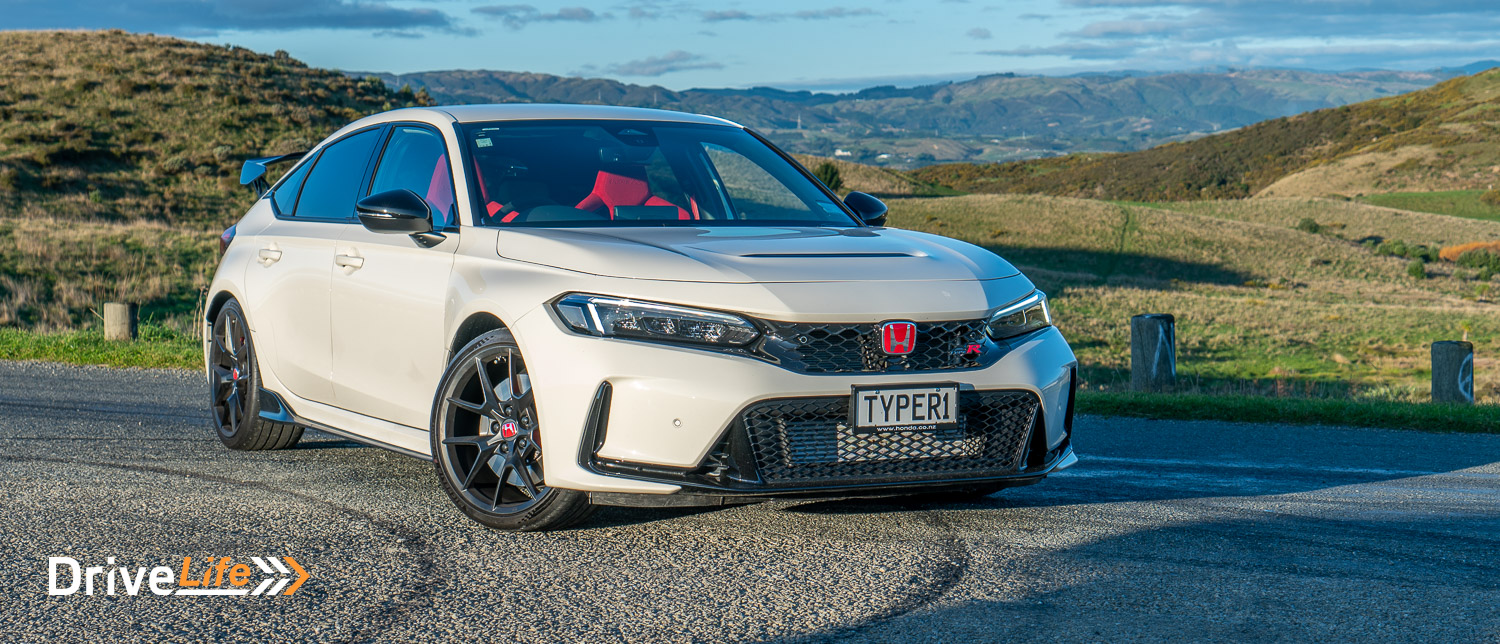
Along with the hardware upgrades, the FL5 also gains an ‘Individual’ drive mode setting, which allows you to cherry-pick individual settings from the fixed modes, being Comfort, Sport and +R.
This simple addition could be the one that makes FK8 owners the most envious. Individual mode allows you to drive around with the engine settings in maximum attack, (i.e in +R), but with the dampers slackened-off (i.e. in Comfort). Believe me, the benefit of this is significant, because the damper settings in +R mode are ridiculously stiff. In this mode, it seemed to find bumps in the road you didn’t know existed.
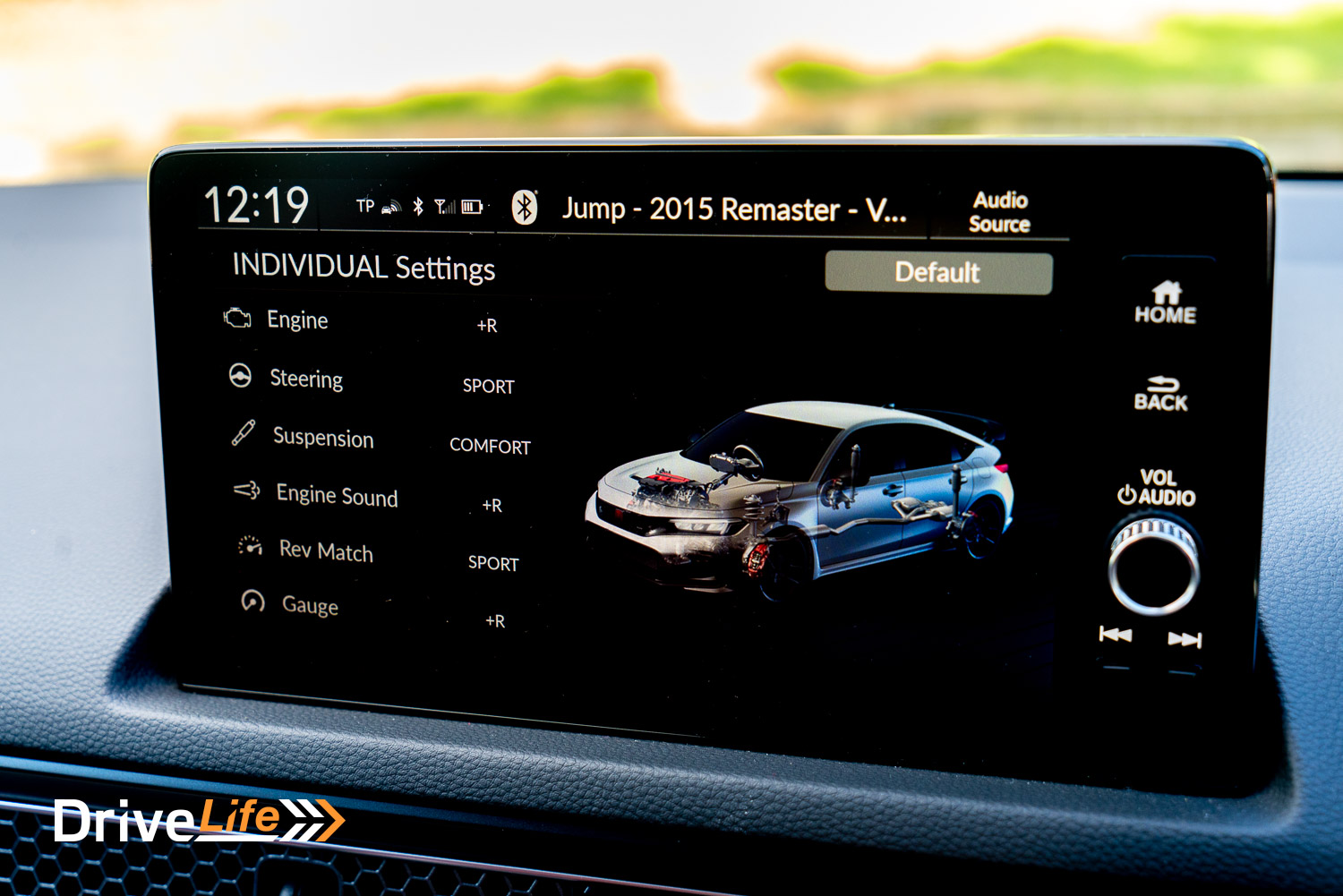
Between the dampers being in Comfort along with the Civic Type R’s excellent seats, the ride quality is acceptable for the daily drive. However, even with those accommodating damper settings, there’s no way of entirely avoiding the ride quality consequences of Civic Type R’s ultra stiff chassis on the road. I suppose it’s a trade-off we ought to accept for performance this good.
Ride quality, unfortunately, isn’t the Civic Type R’s true deficiency. Instead, it’s exhaust noise, or rather, the lack thereof. Sadly, the Civic Type R doesn’t produce the bark to match its bite. We had this same criticism of the old car too.
Honda has attempted to address this by amplifying the sound in the cabin, but it does sound quite synthetic. According to Honda, designing a mechanical sound tube would have blown out costs, and considering a Type R will set you back close to $75,000 these days, perhaps it was a wise decision.
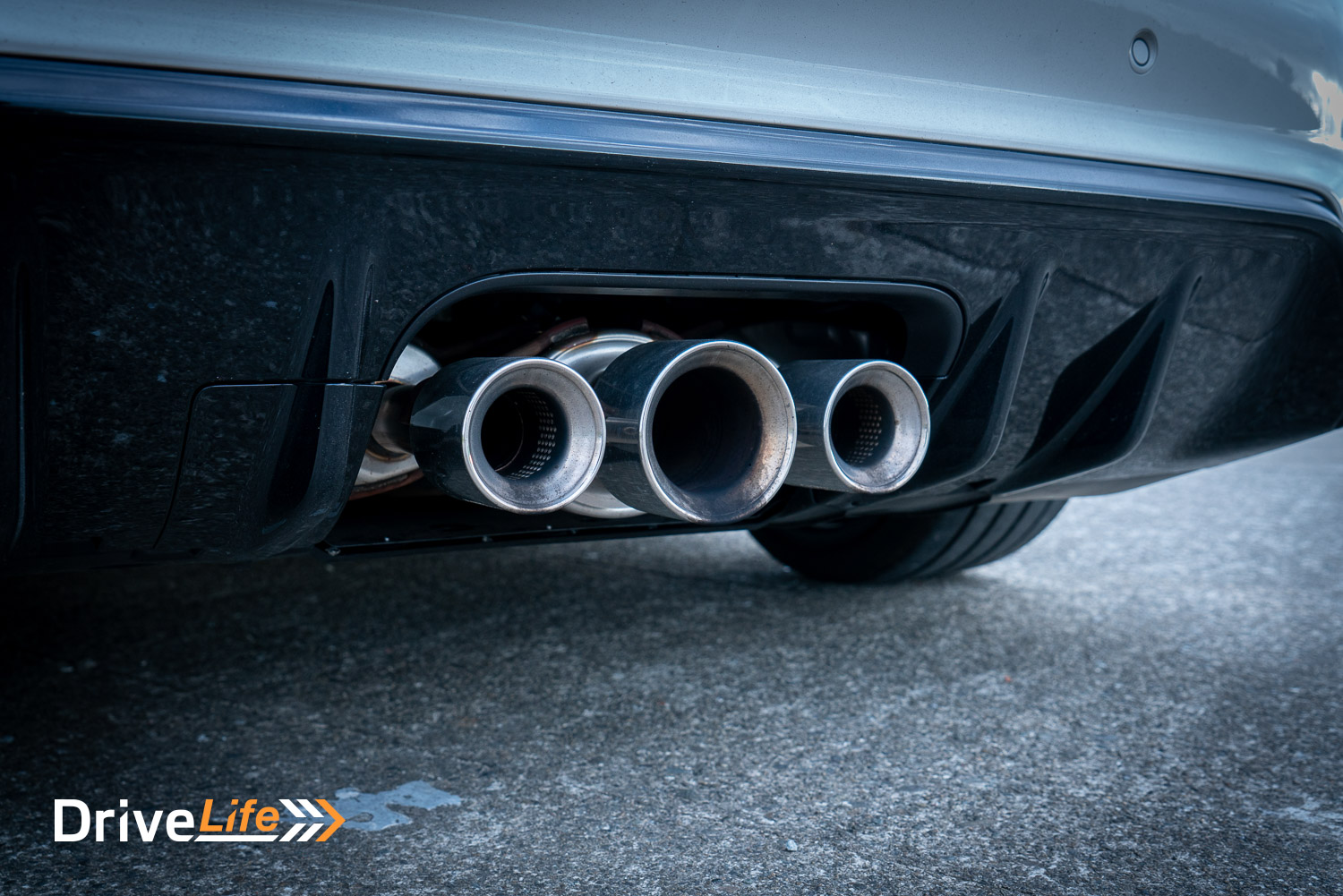
However, Hyundai has no such issue with the i30N, which sounds great and is cheaper than the Type R. Different priorities, I suppose.
The Civic Type R also has a couple of design quirks, which might be a learning curve-ball for the more traditional hot-hatch enthusiast. Firstly, the Civic Type R doesn’t have a manual handbrake. Instead, Honda moved to an e-handbrake with the last generation FK8, and that’s carried over into the FL5. There is an Auto-Hold setting for hill starts, which does work well. However, it does automatically switch off with the car, meaning you’ll need to remember to press the button every time you hop in. Oh, and it won’t switch on unless your seat-belt is plugged-in, which I rather annoyingly discovered when reversing out of an uphill driveway.
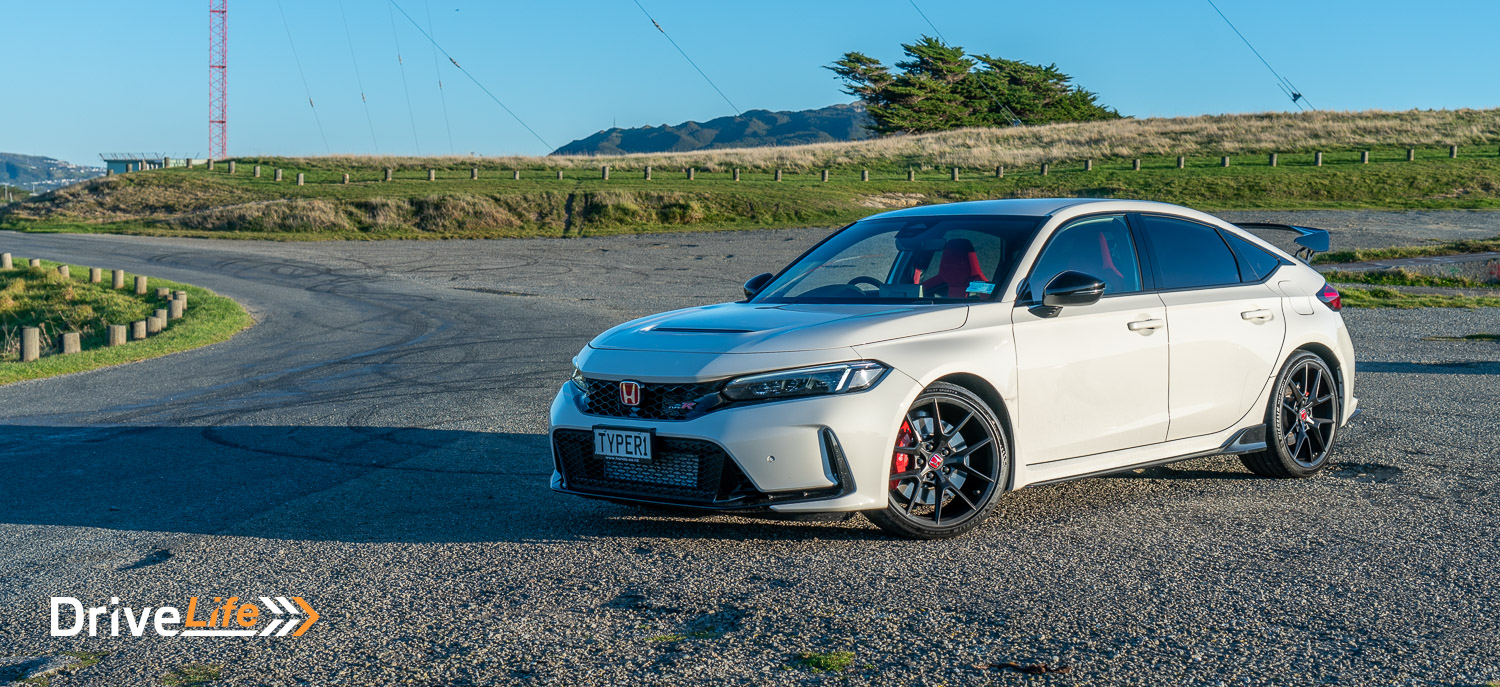
Another awareness alert is that the Civic Type R will naturally bring out your inner hoon, and naturally, you can expect that to be reflected in your fuel consumption. During our stint with the Type R, we achieved a fuel economy figure of 11.3L/100kms, a bit above Honda’s WLTP estimate of 9.7L/100kms.
But who cares. It’s all about smiles per gallon, right?
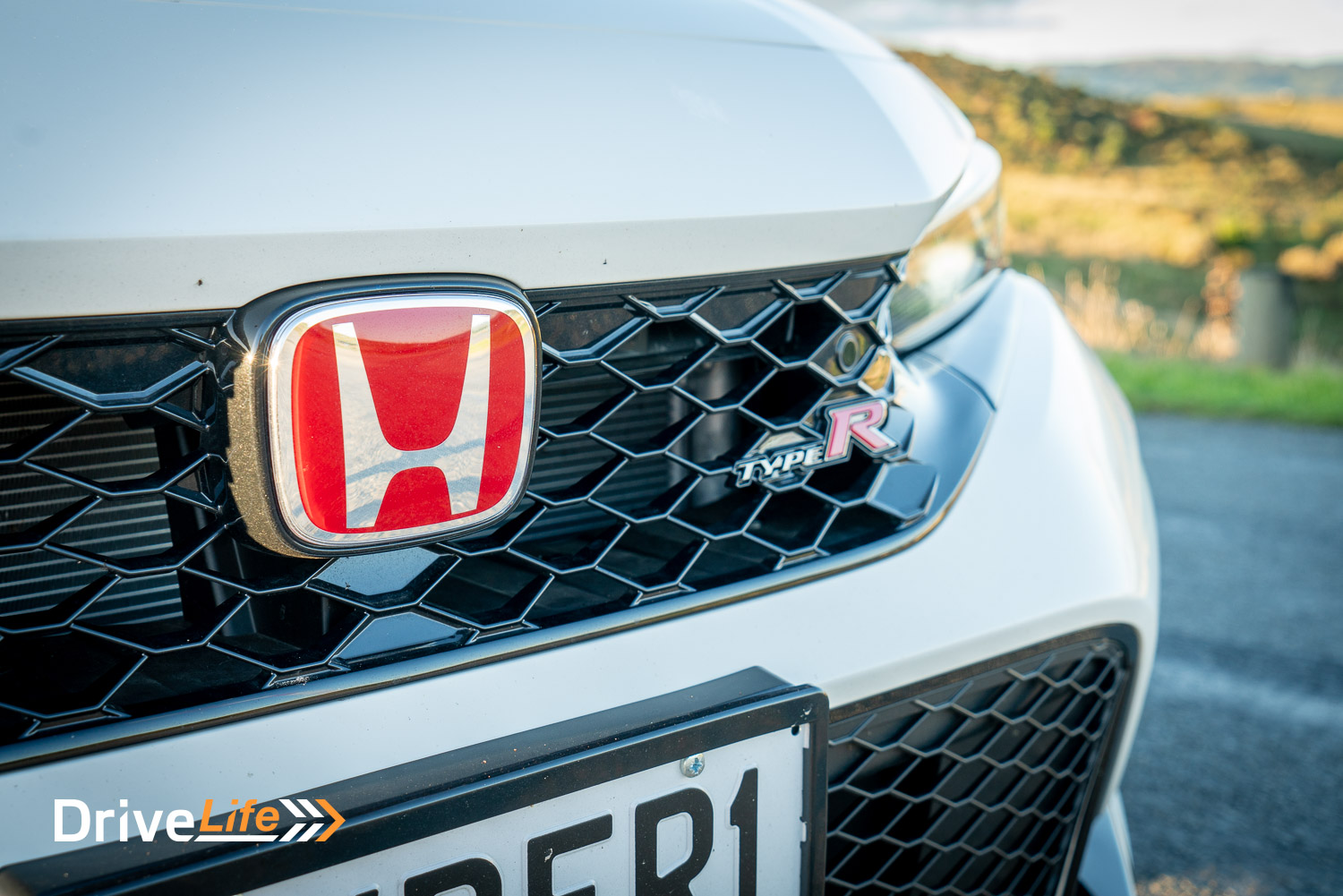
2023 Honda Civic Type R – Fred’s Point of View
I have loved driving the Type R every time I get behind the wheel. That gearbox is one of the best in the business, with an action that can’t be beat.
One thing that always surprises me is the amount of torque the engine gives you in everyday driving; you’d expect the Type R to be a screamer, with little go below 3,000rpm but that’s not the case. It makes for a great daily driver, and changes of 1,3,6 are all too easy and put little strain on the drivetrain.
The ride is what it is, but could be a whole lot worse. I absolutely love the red seats, and just seeing these made me want to go out and buy one. They look amazing, and have great support for someone my size.
I know Honda makes a big deal about their gear knob, and agreed, it looks extremely cool and retro but during the cold spell when I had the car, it got bloody freezing to use. Yes, I know, man up and all that.
The performance of the car seems better than I remember, and while the exhaust still refuses to make any childish popping noises, the engine seems to have taken on some actual character, and sounds pretty rorty at times. I liked it a lot, and this is a definite improvement over the last model.
I think if there was one thing that still lets the car down, it’s the dashboard. It’s not really fit for purpose, and while Honda has tried to make it sort of sporty, it’s not. The Type R is crying out for a decent dashboard.
But that’s a minor moan. For me, even if it has lost some of its aggressive looks, the handling, performance and sound of the new Civic Type R are outstanding. I’d love to have one in the garage.
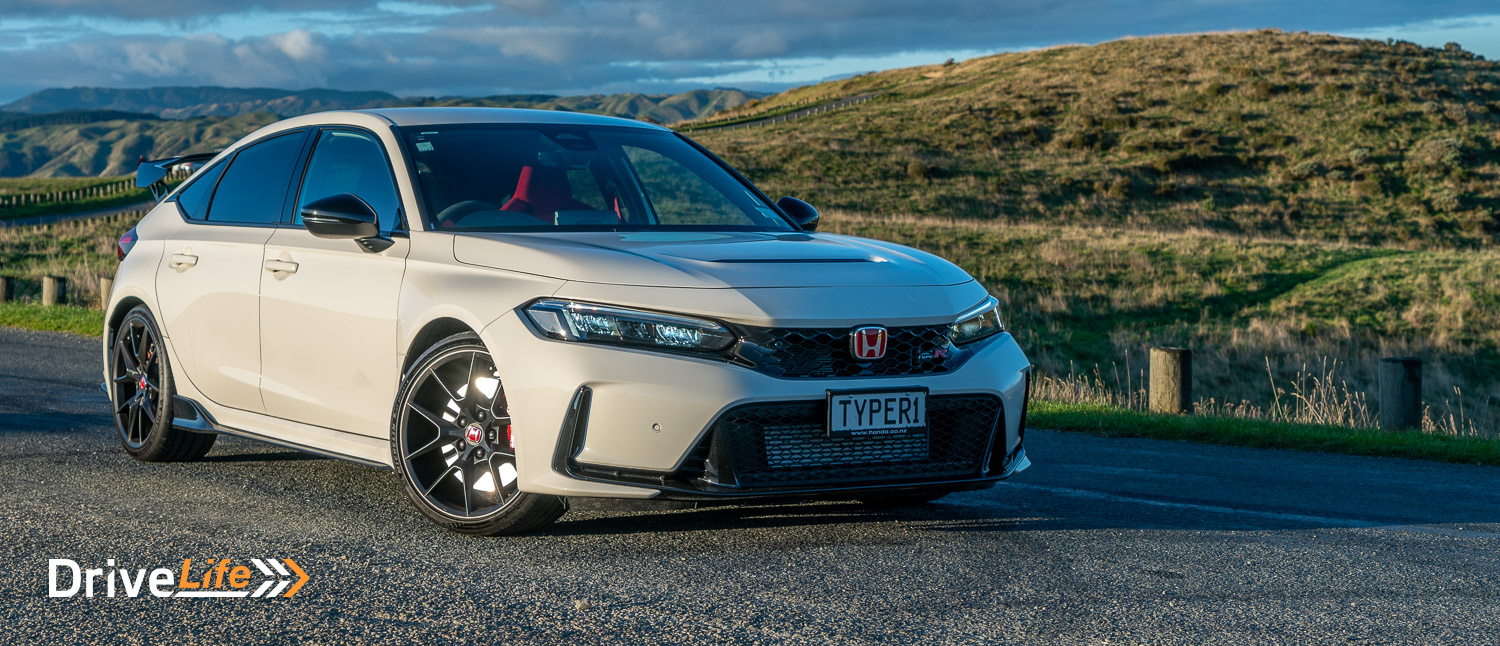
2023 Honda Civic Type R – Specifications
| Vehicle Type | 4-door hatchback |
| Starting Price | $72,000 |
| Price as Tested | $72,000 |
| Engine | 2.0-litre turbocharged 4-cylinder petrol |
| Power, Torque kW/Nm | 235/420 |
| Transmission | 6-speed manual transmission |
| Spare Wheel | Temporary Repair Kit |
| Kerb Weight, Kg | 1,429 |
| Length x Width x Height mm | 4606 x 1890 x 1890 |
| Cargo Capacity, litres | 445 |
| Fuel tank capacity, litres | 47 (95 or higher) |
| Fuel Economy, L/100km | Advertised Spec – Combined – 9.7 (WLTP) Real-World Test – Combined – 11.3 Low Usage: 0-6 / Medium Usage 6-12 / High Usage 12+ |
| Towing Capacity Kg, unbraked/braked | Umm, what? |
| Turning circle, metres | 11.8 Small: 6-10m / Medium 10-12m / Large 12m+ |
| Warranty | 3-year manufacturers/unlimited kilometre warranty (with 2-year distributor extension). 5-year 24/7 Honda Roadside Assist |
| Safety information | ANCAP Rating – 5 stars – Not assessed. (Standard Civic scored 5 stars). Rightcar.govt.nz – 5 Stars – TYPER1 |
Have you enjoyed this review? Be sure to join our monthly email newsletter list so you don’t miss a single review!


